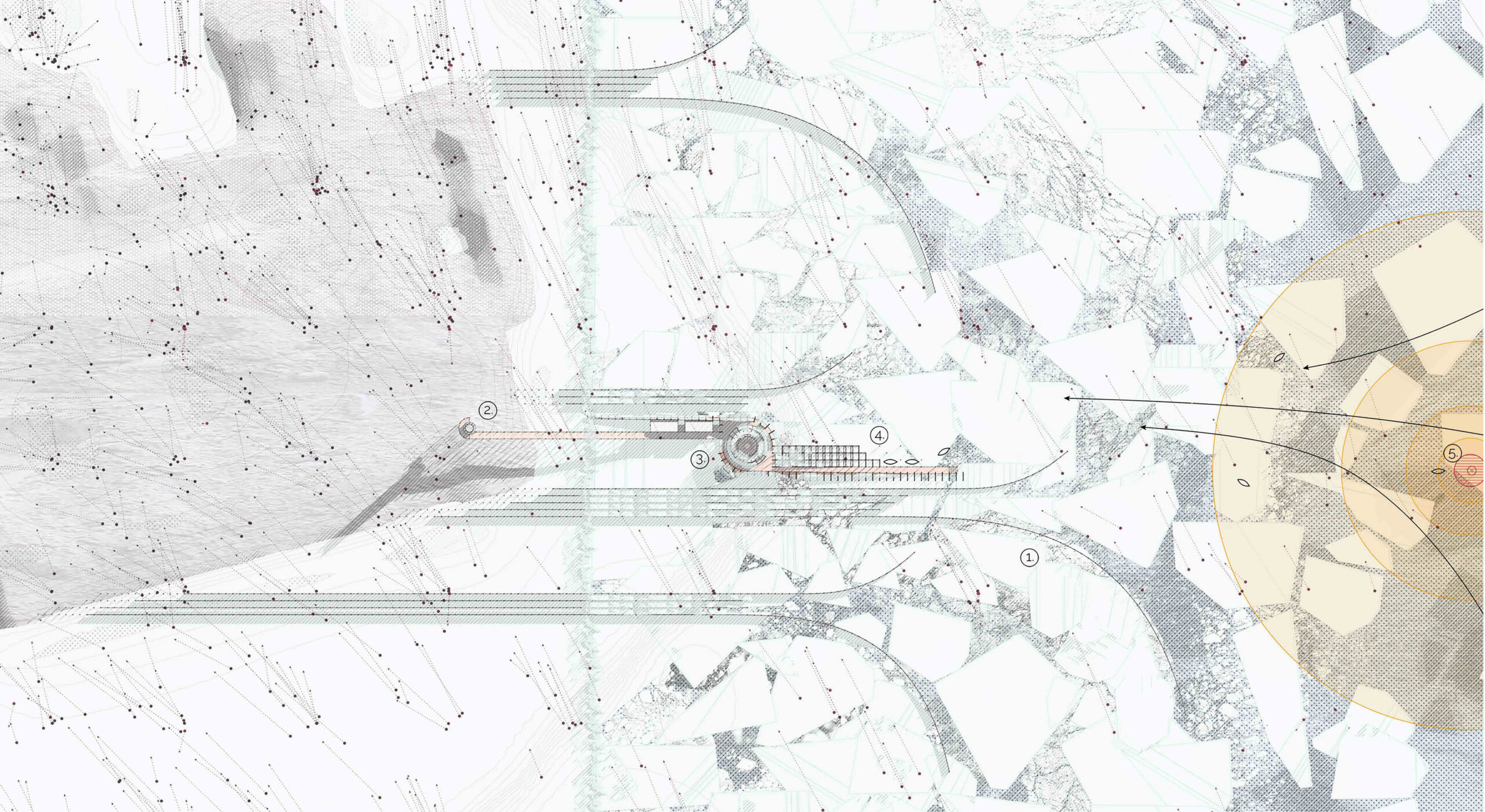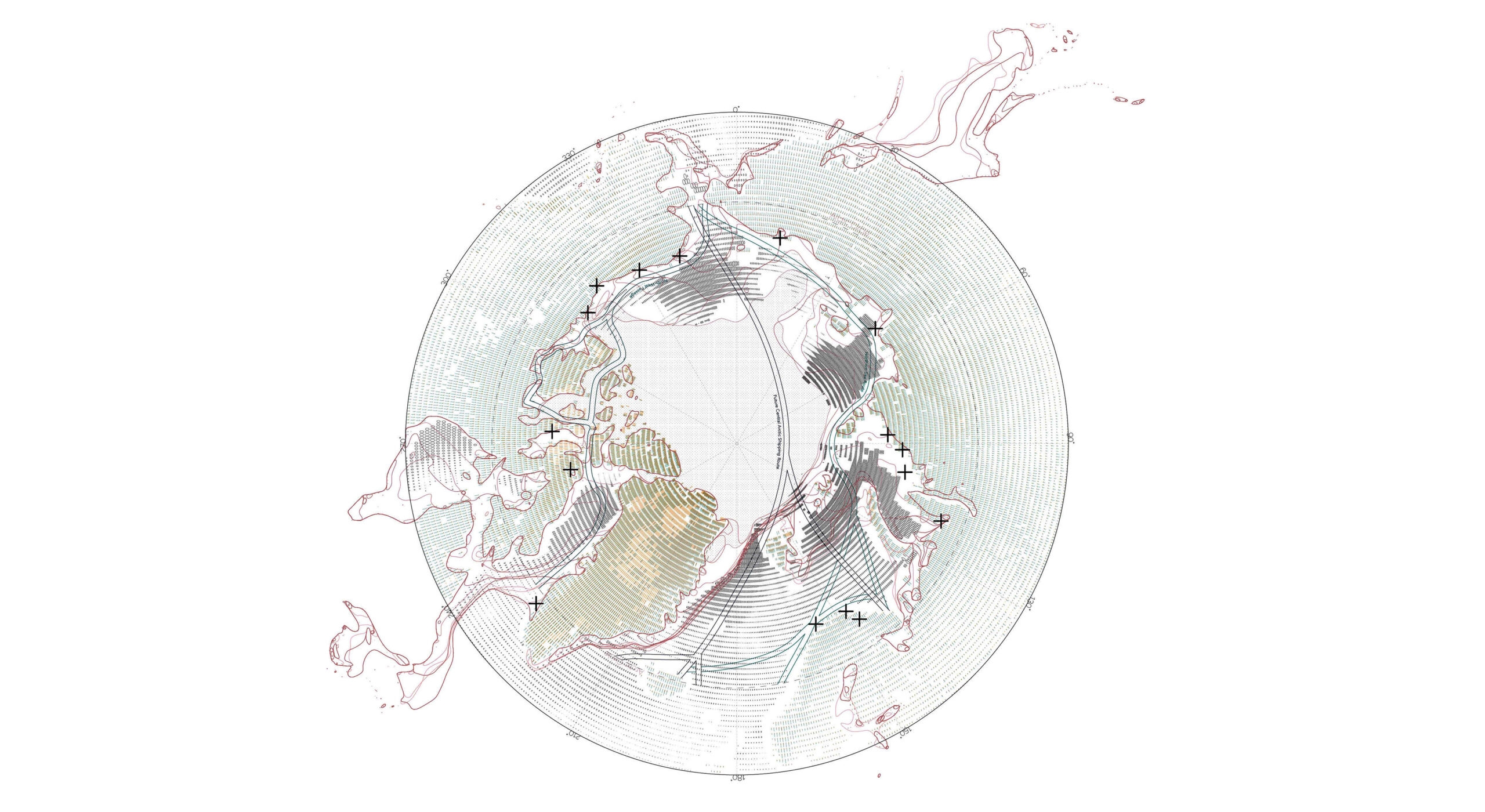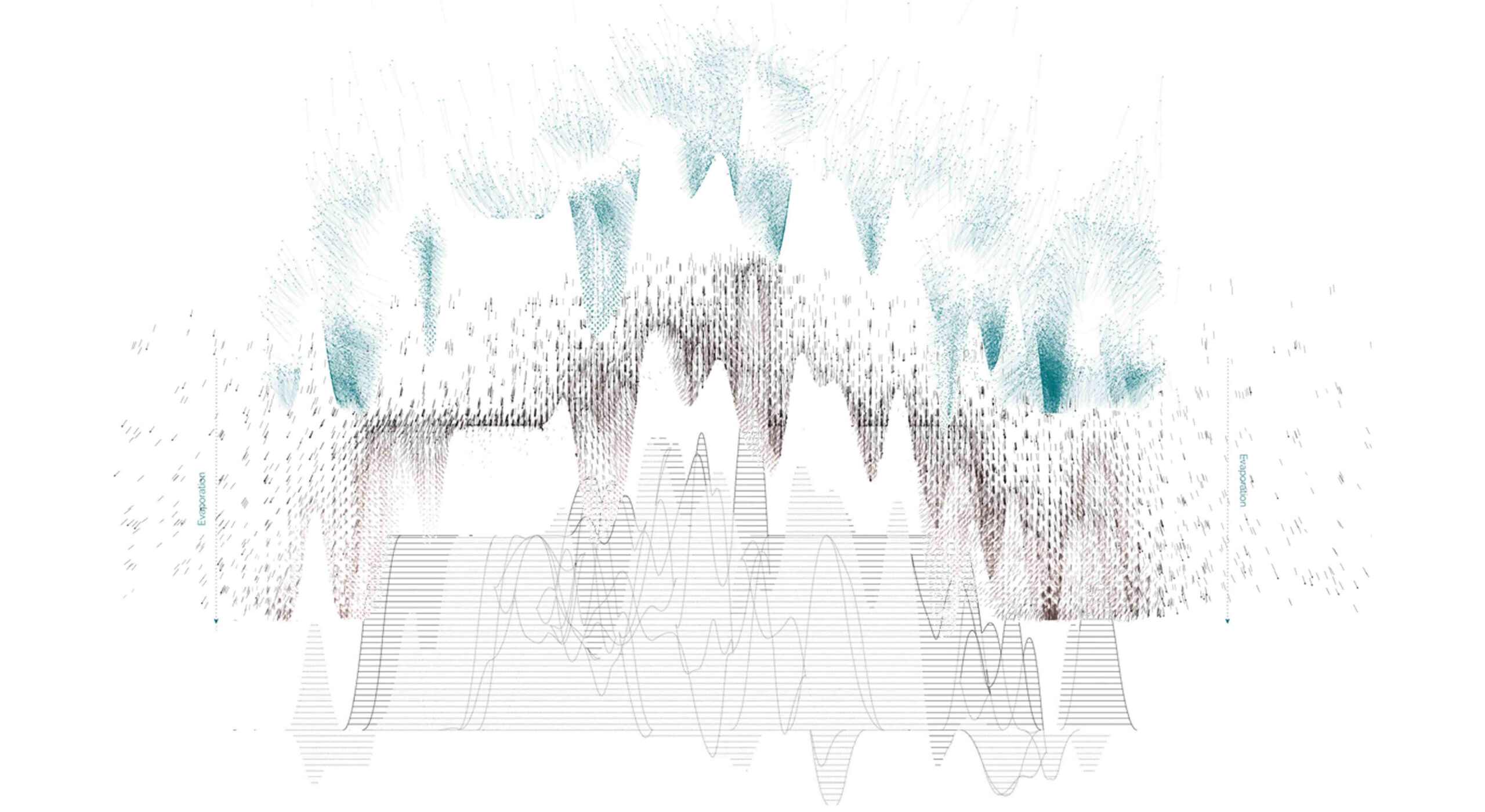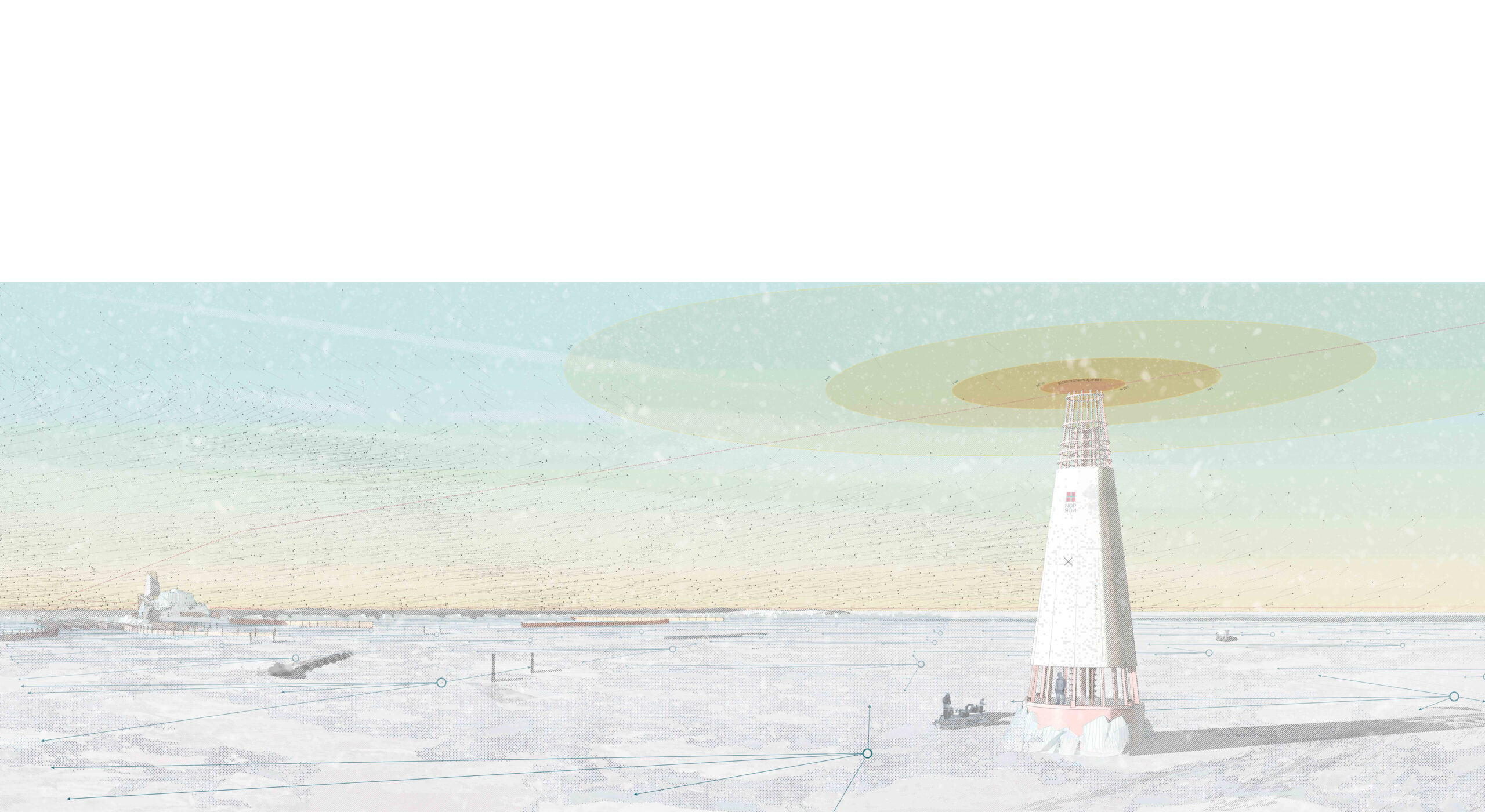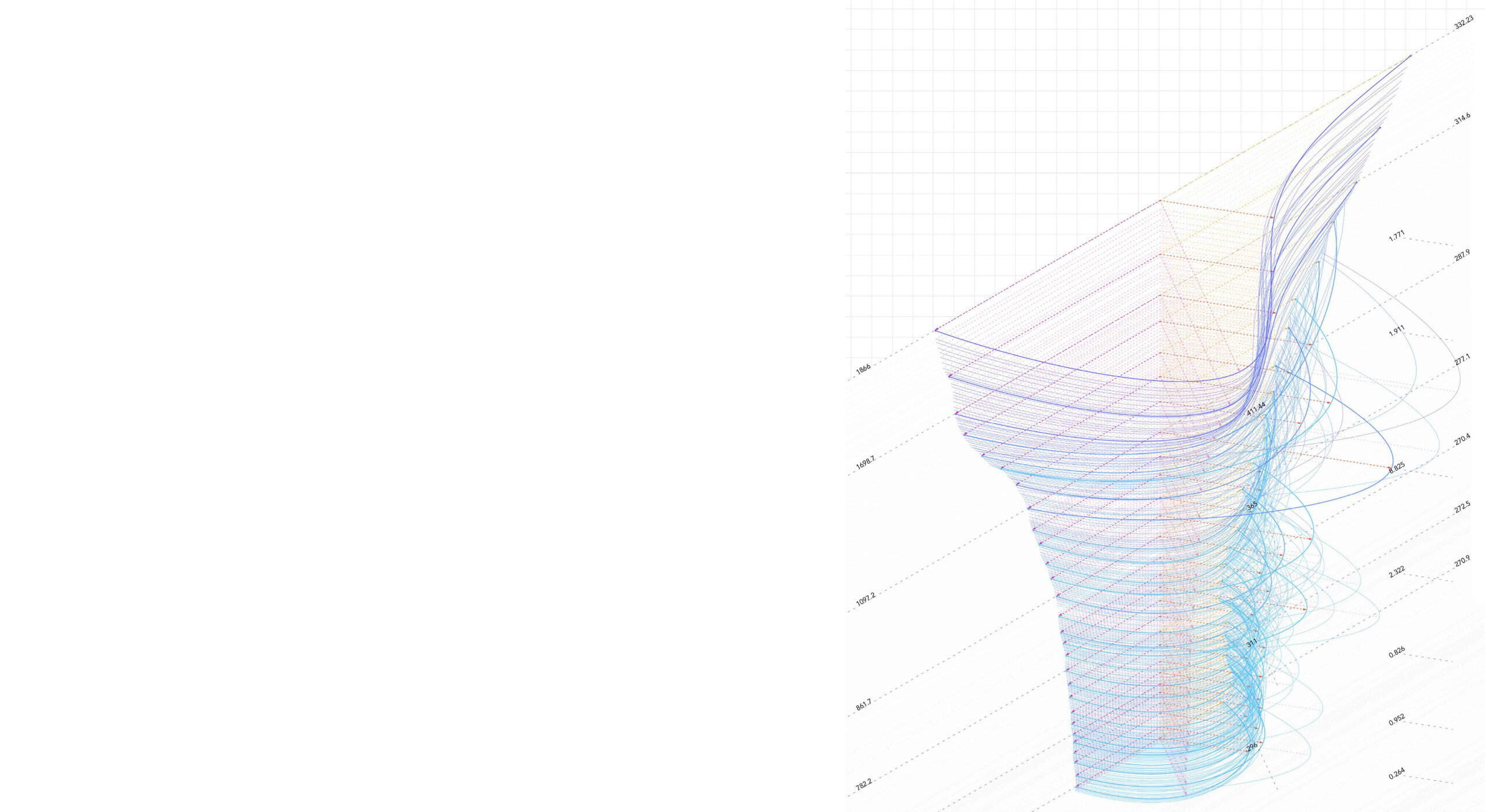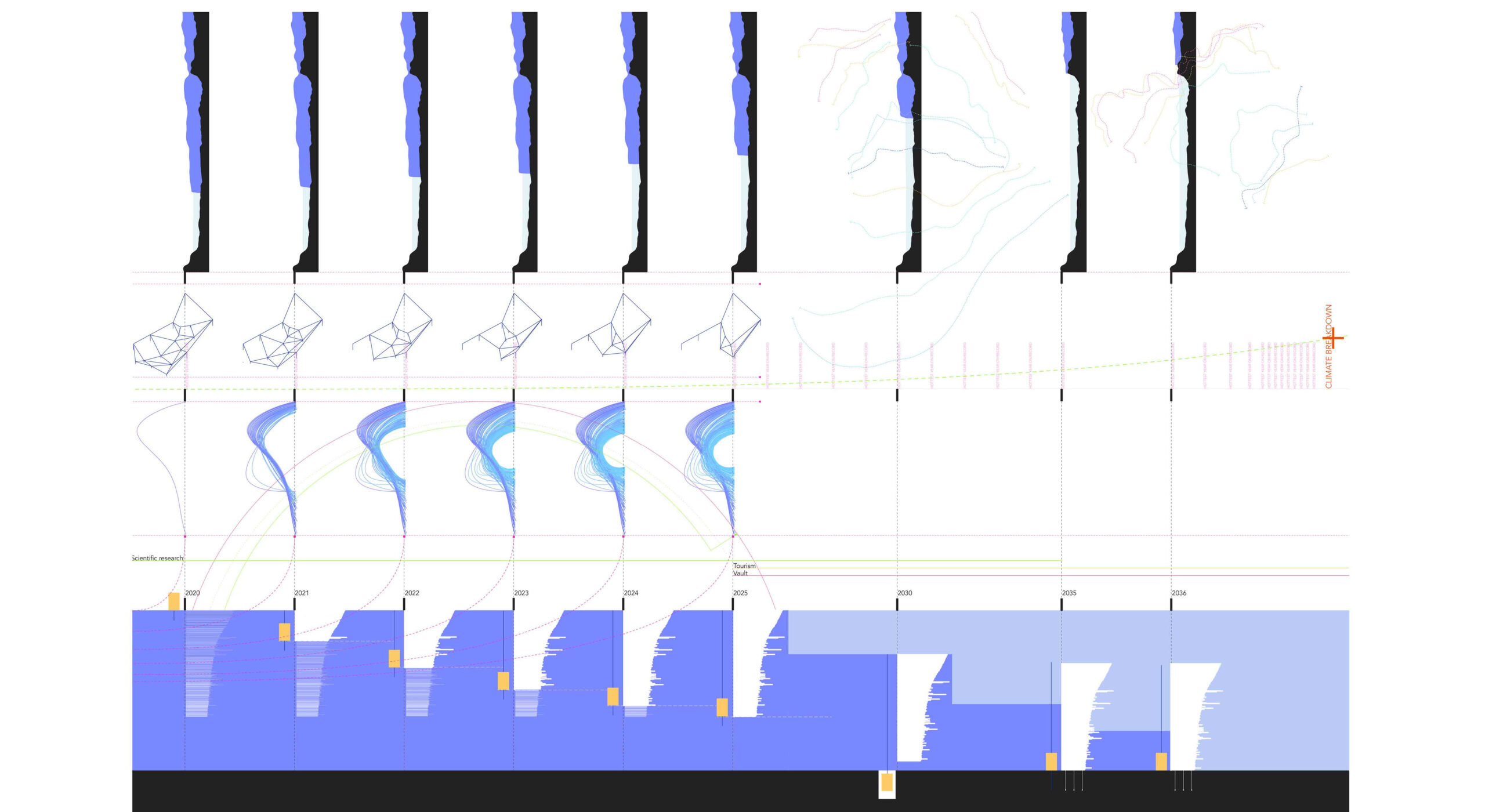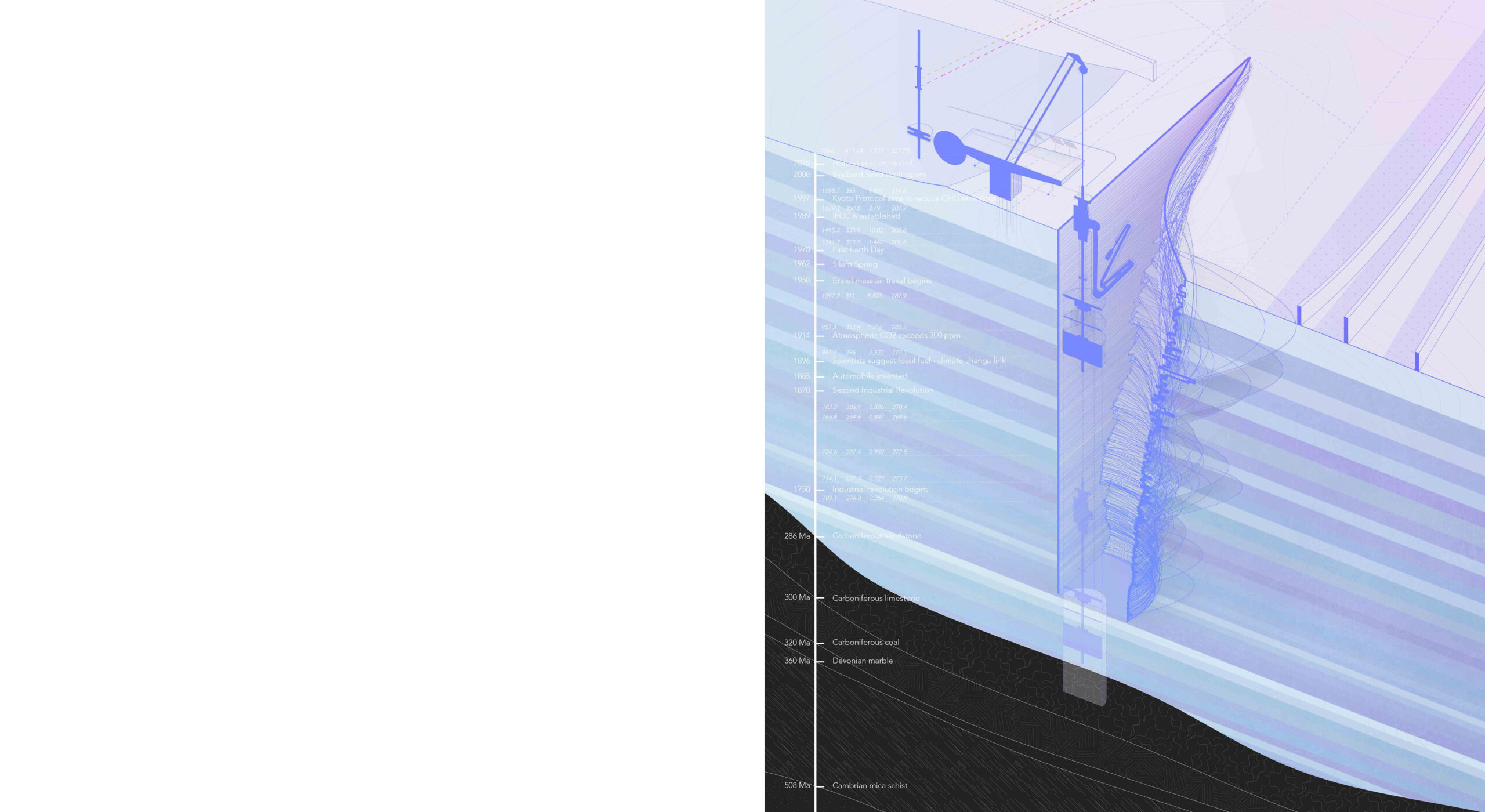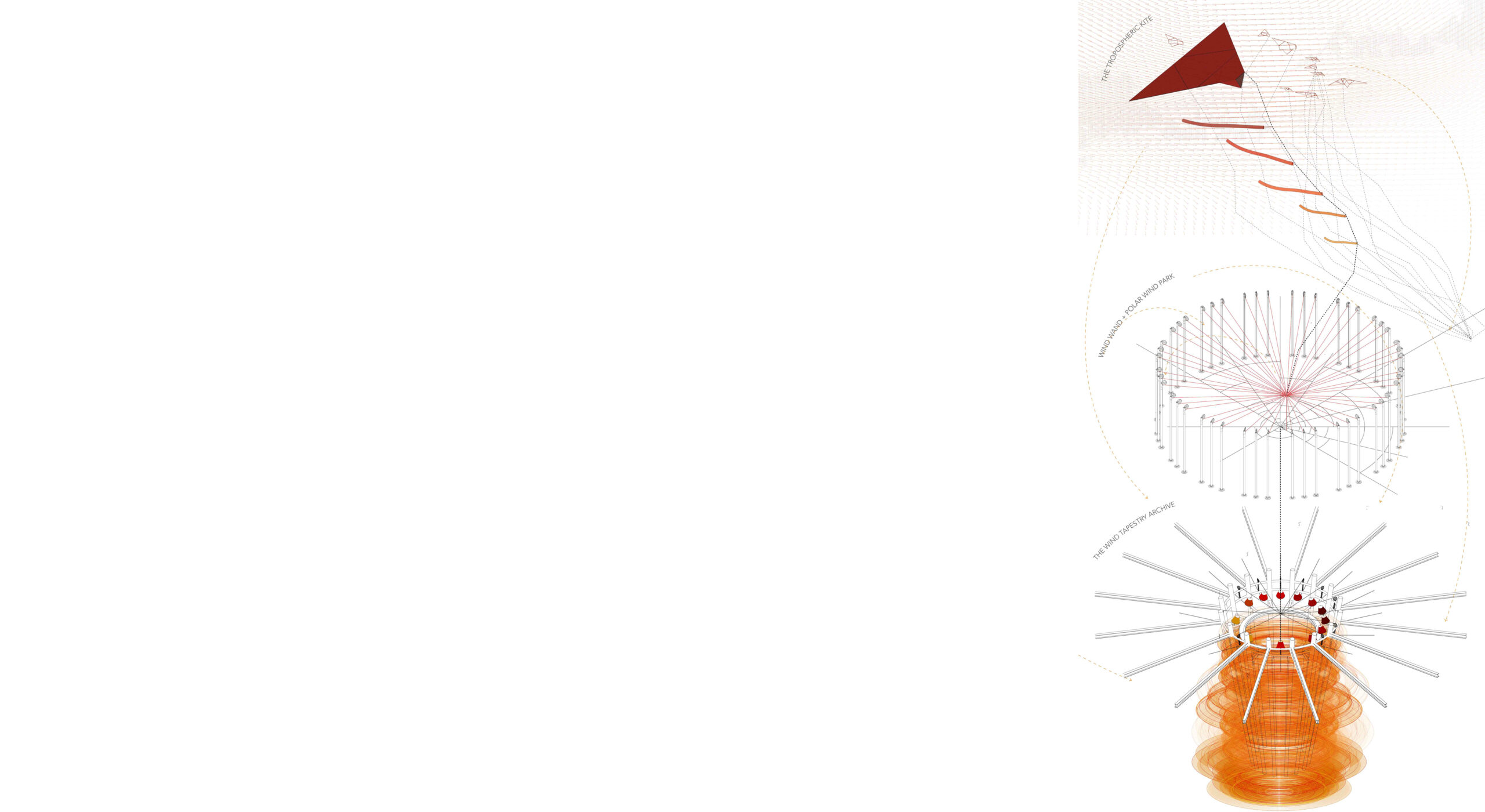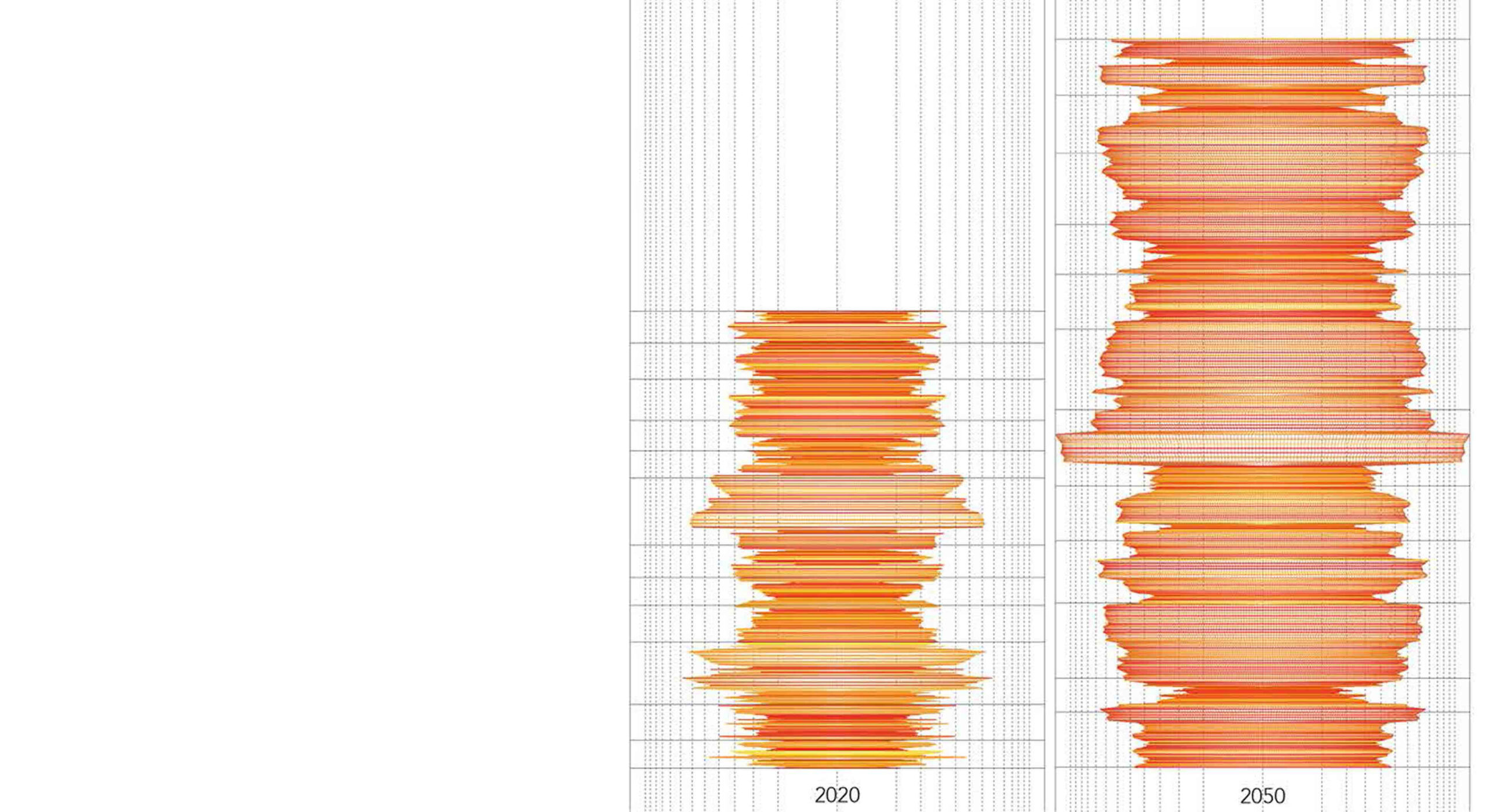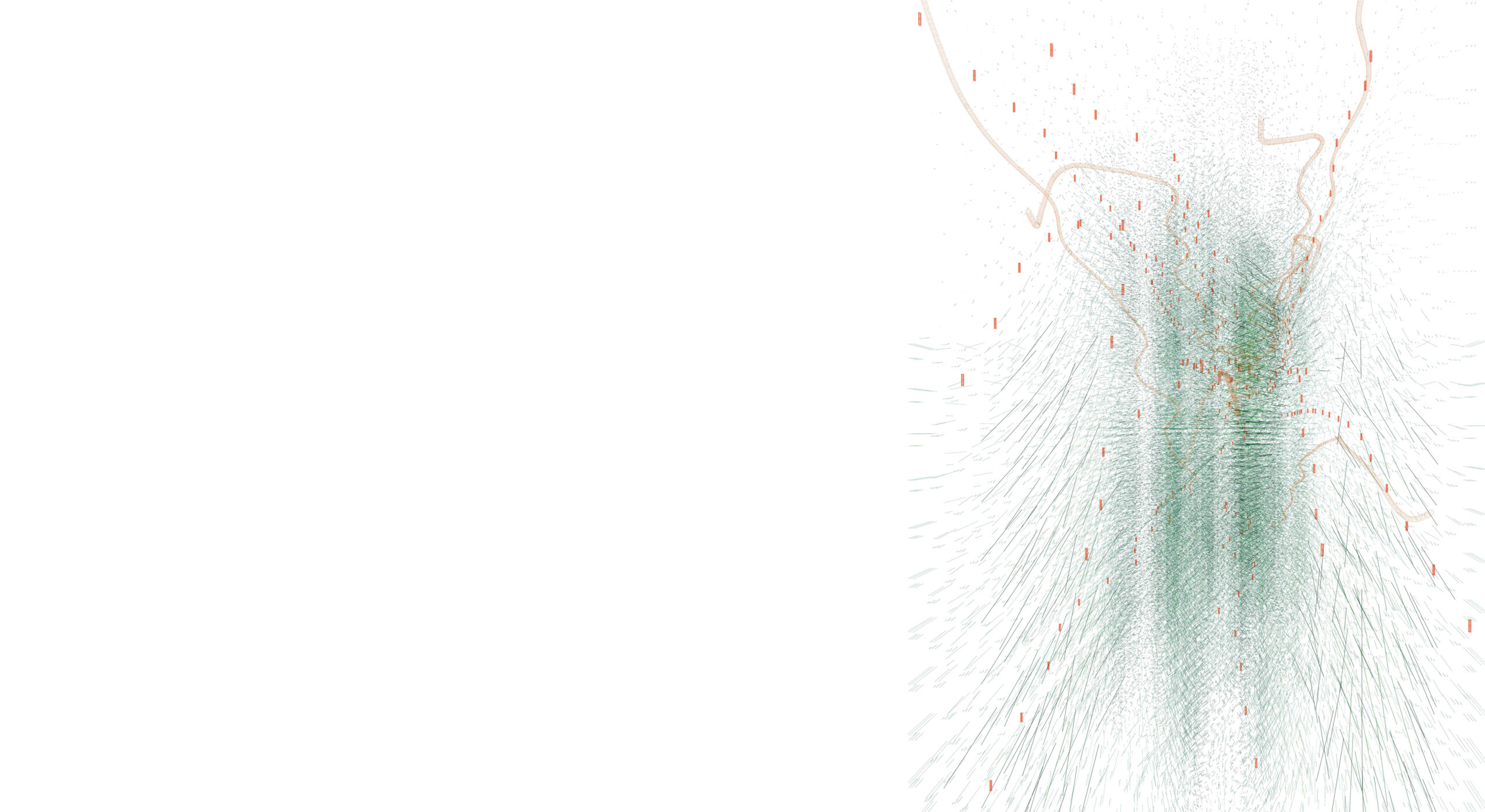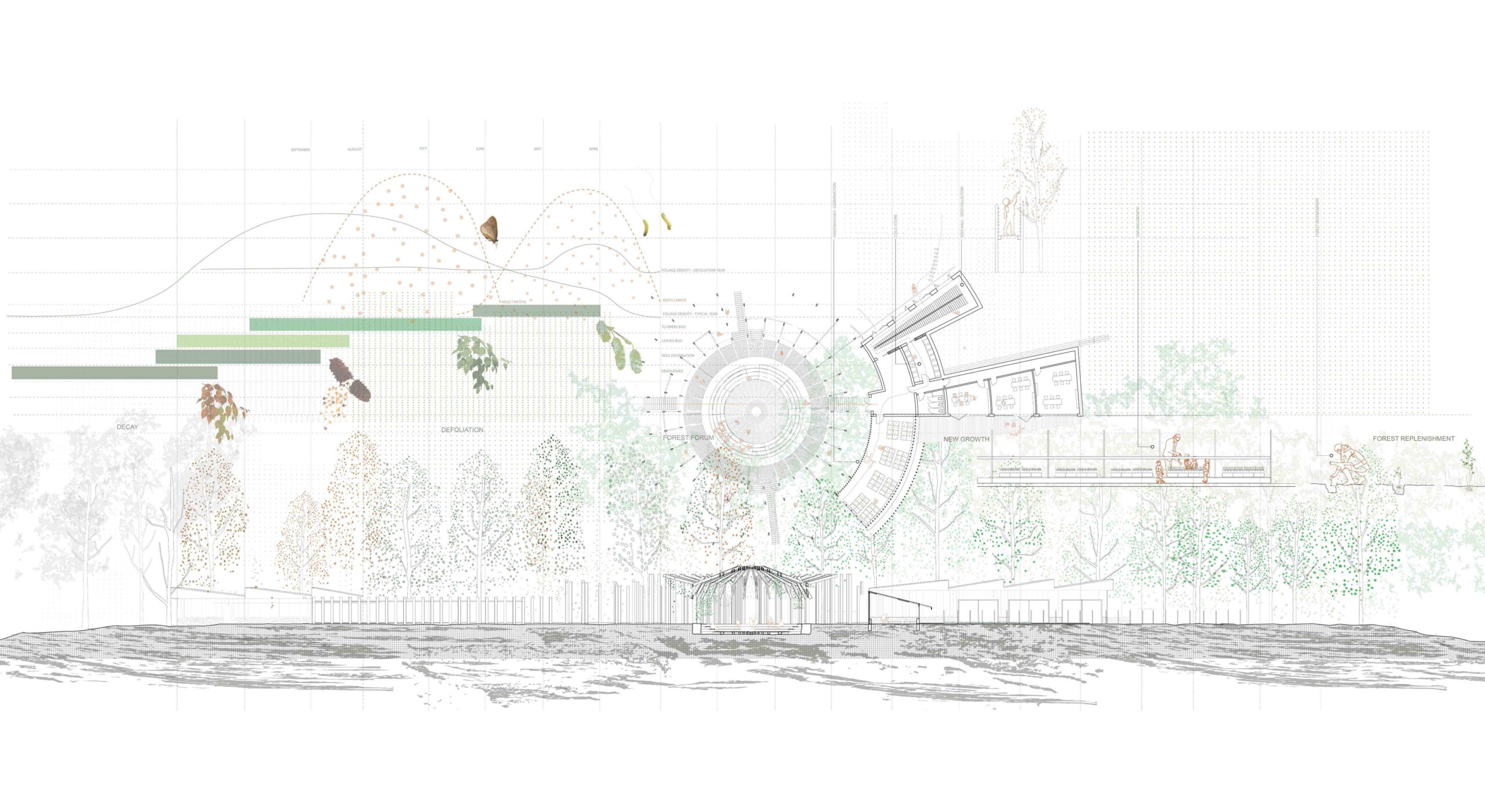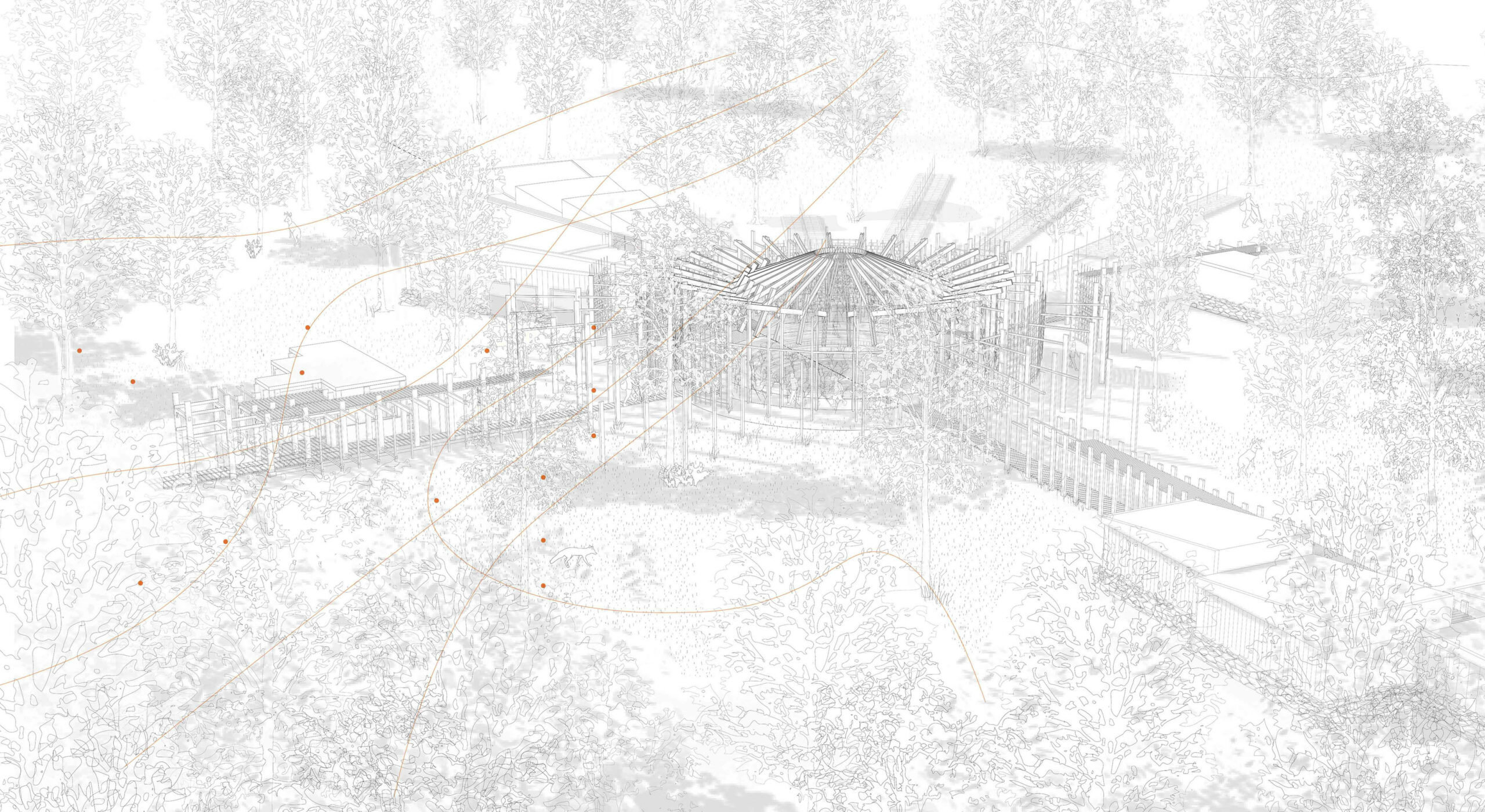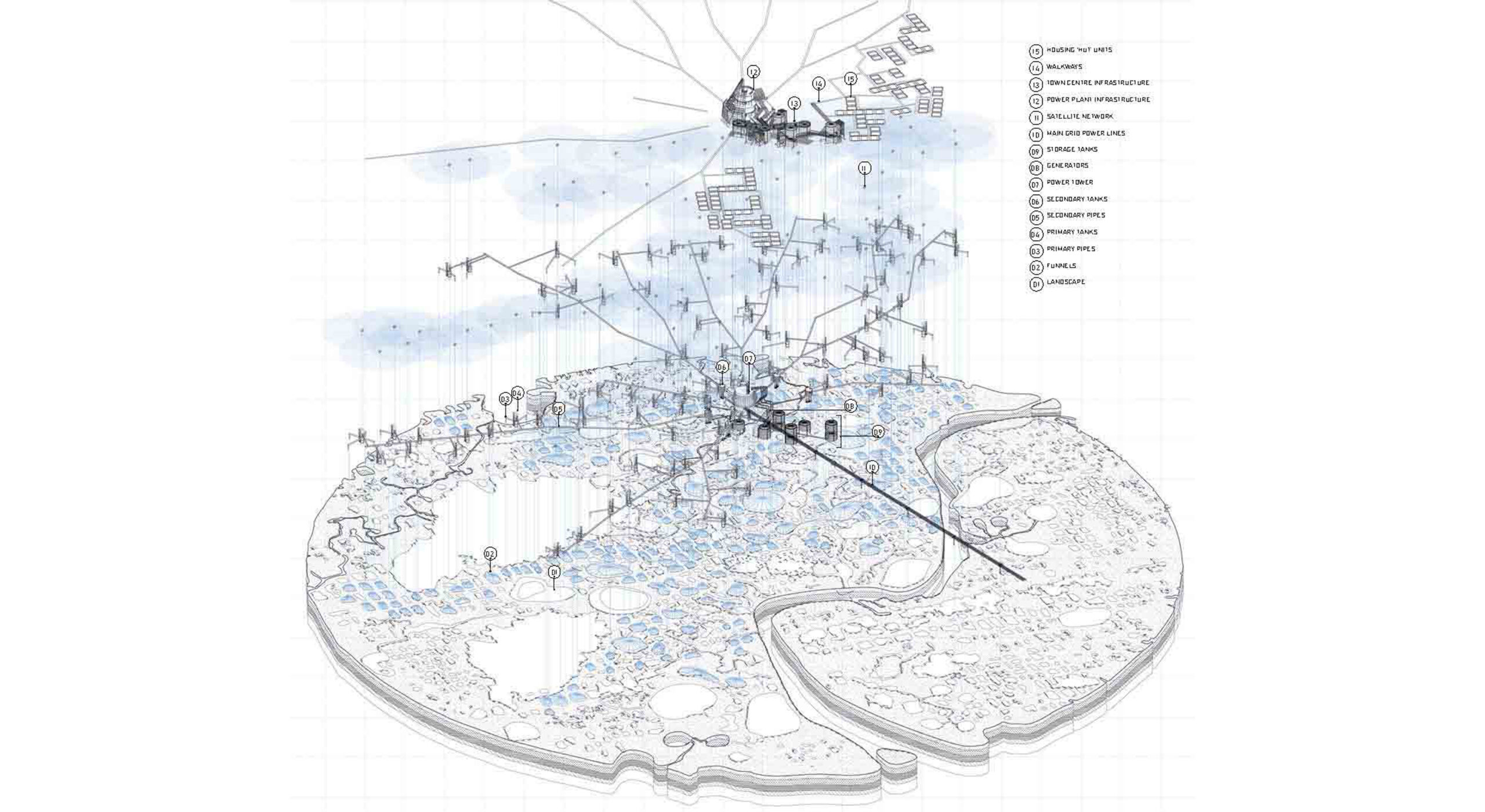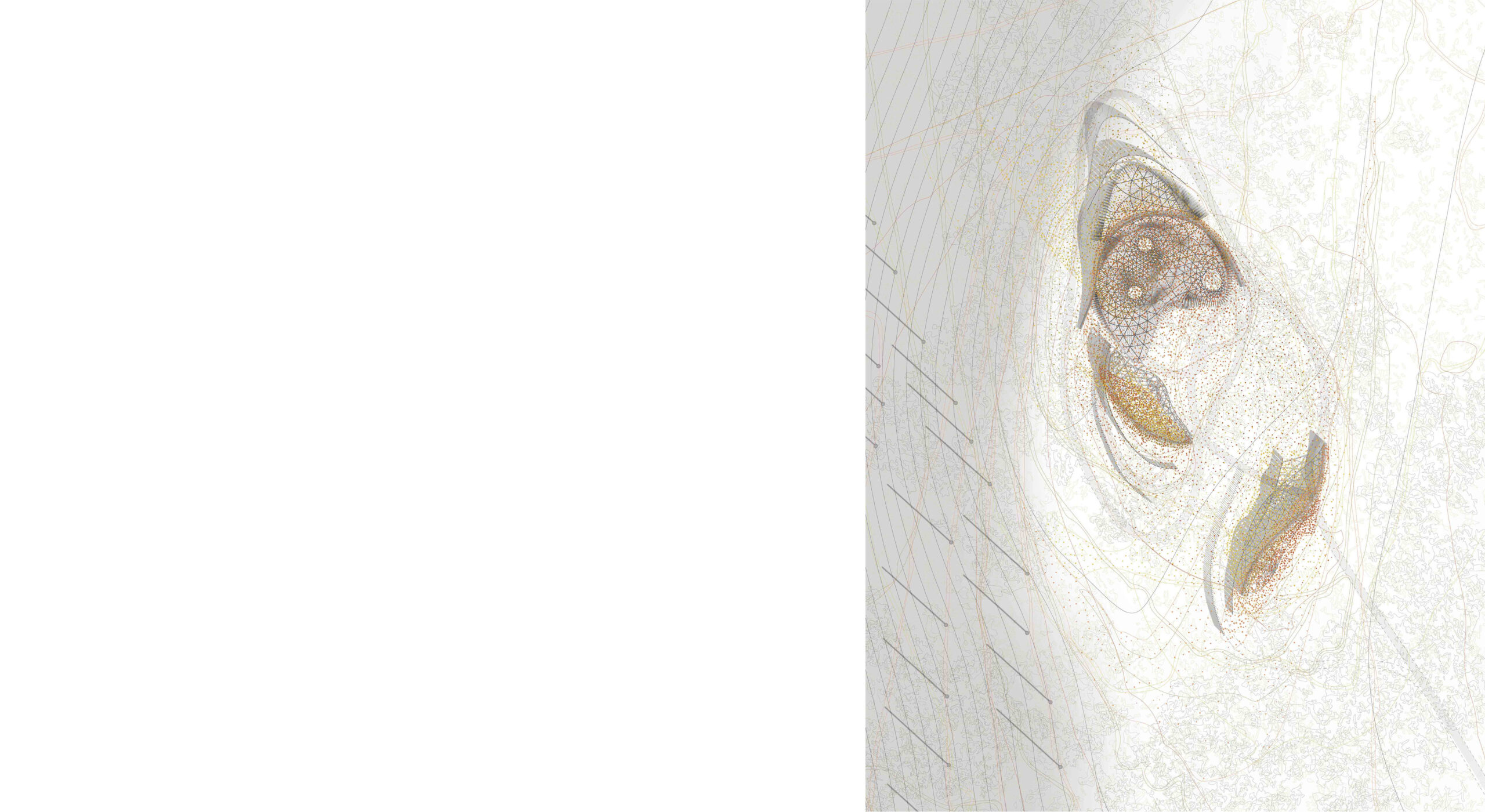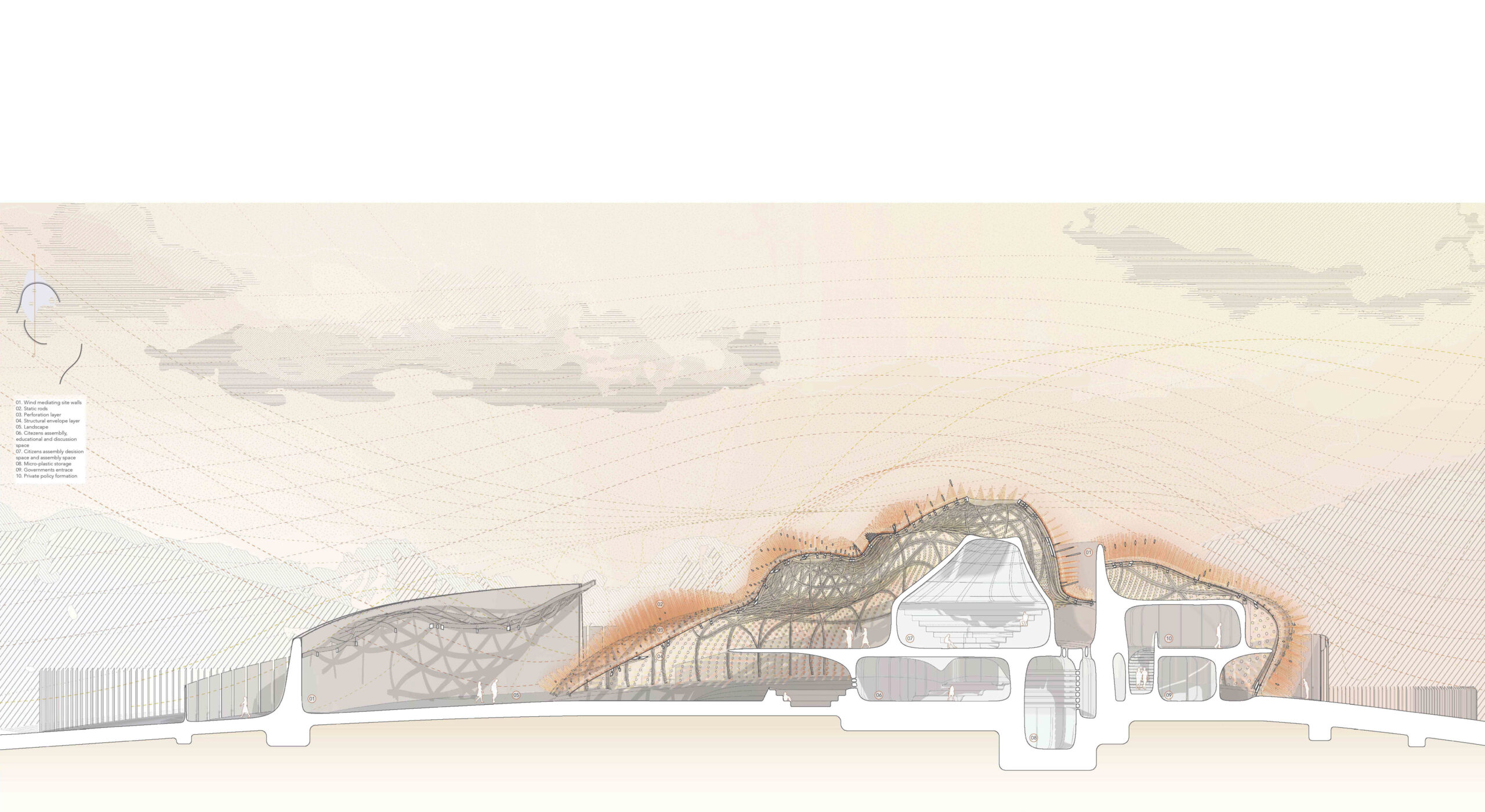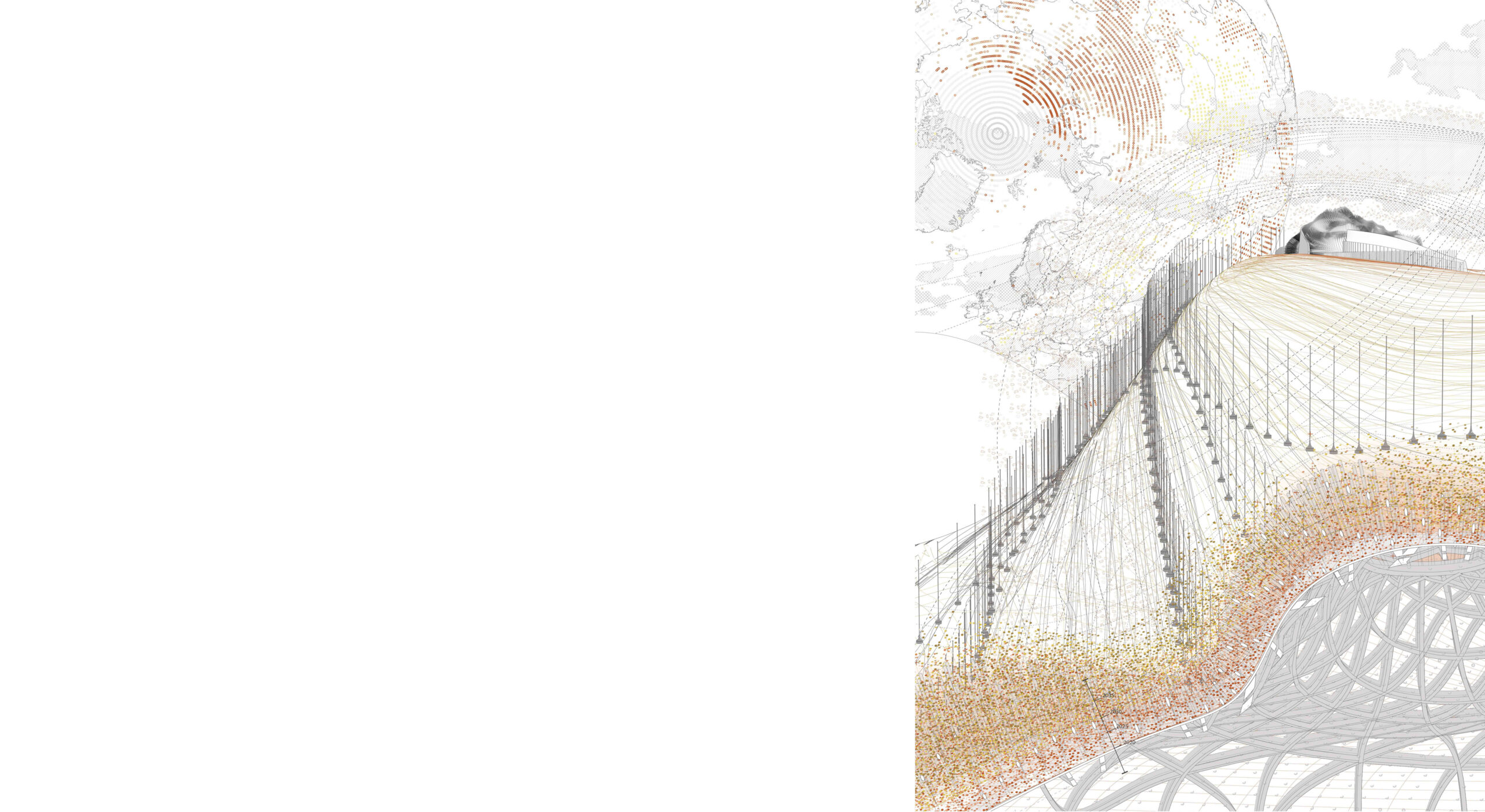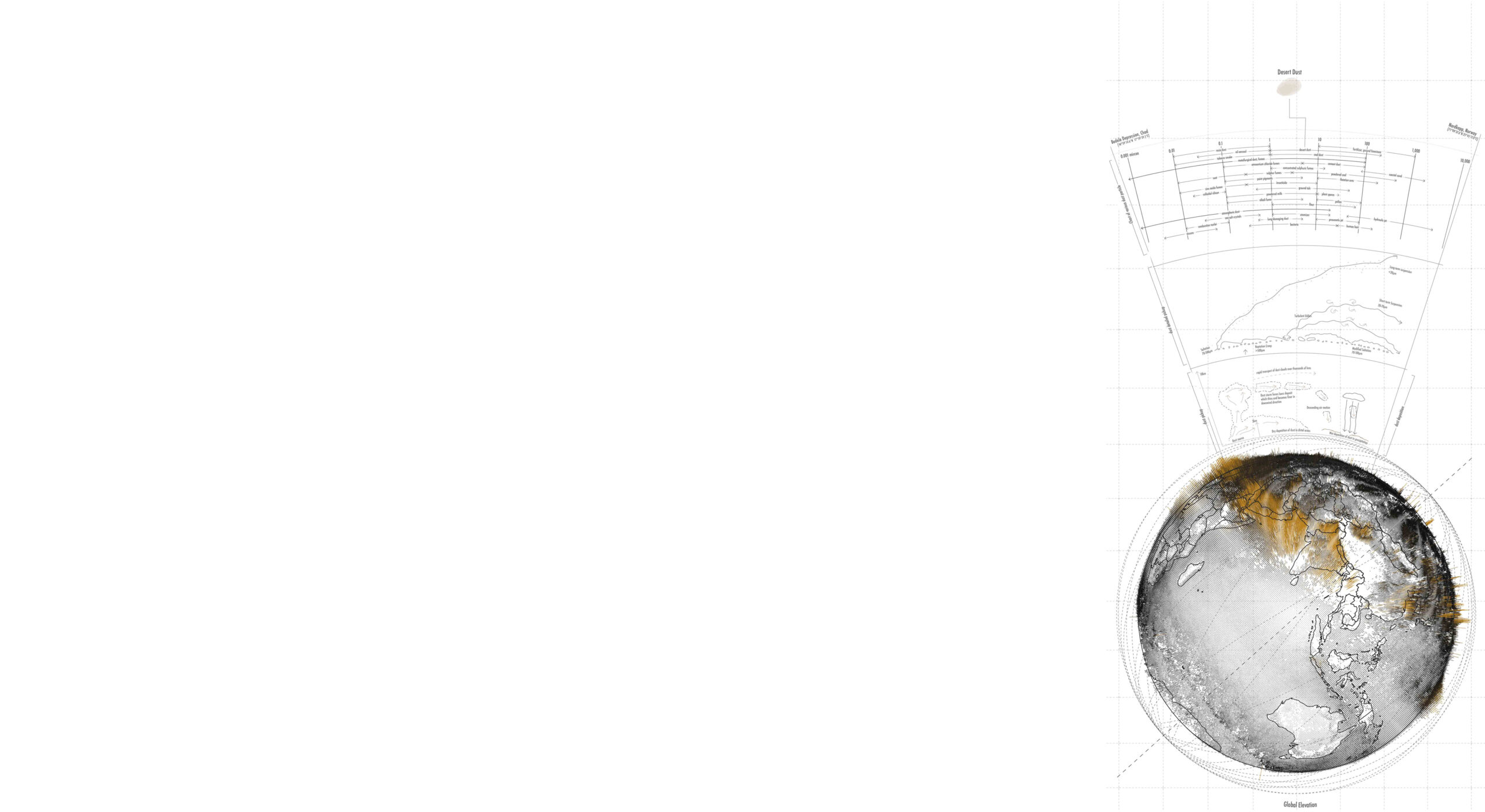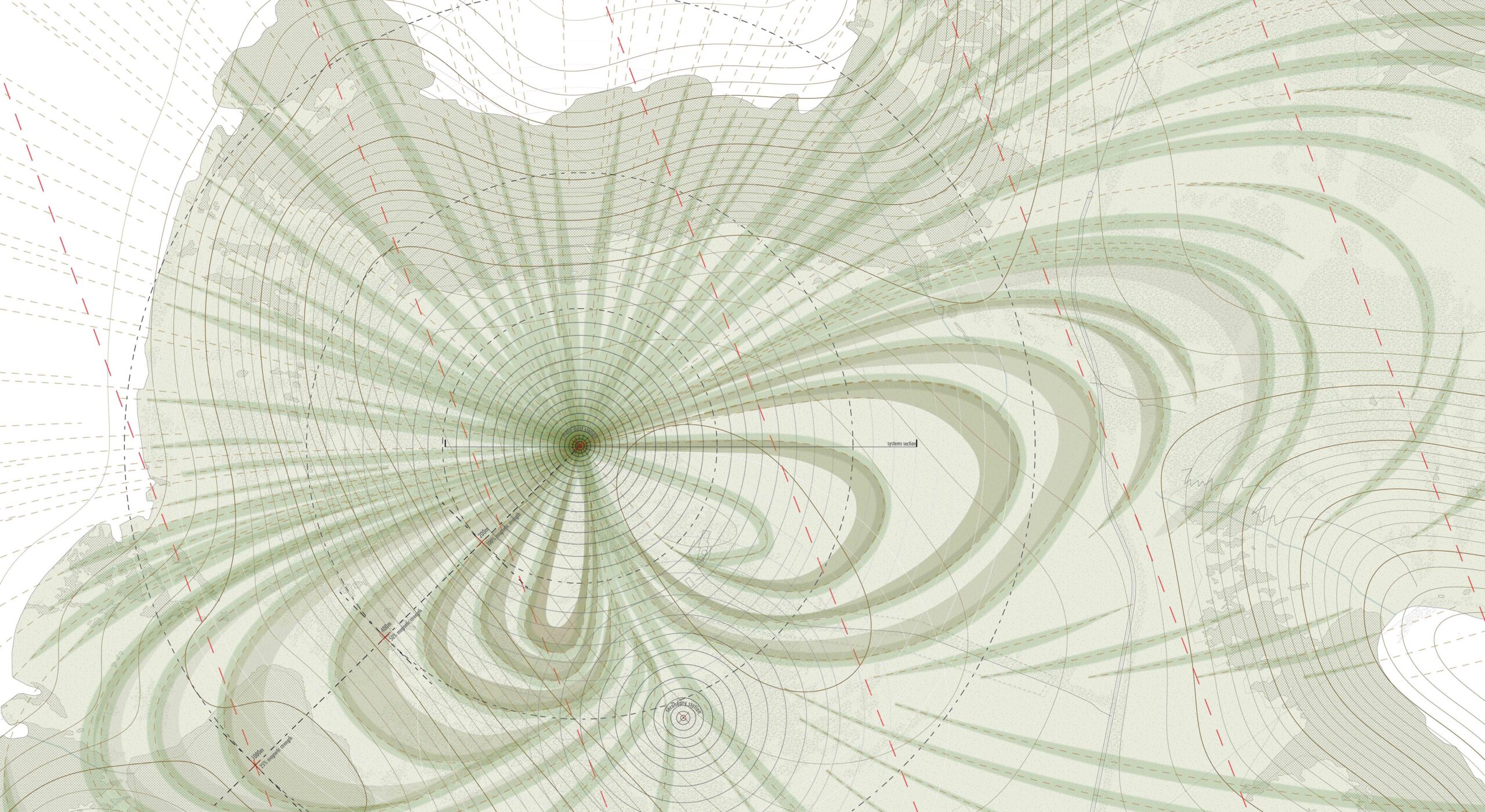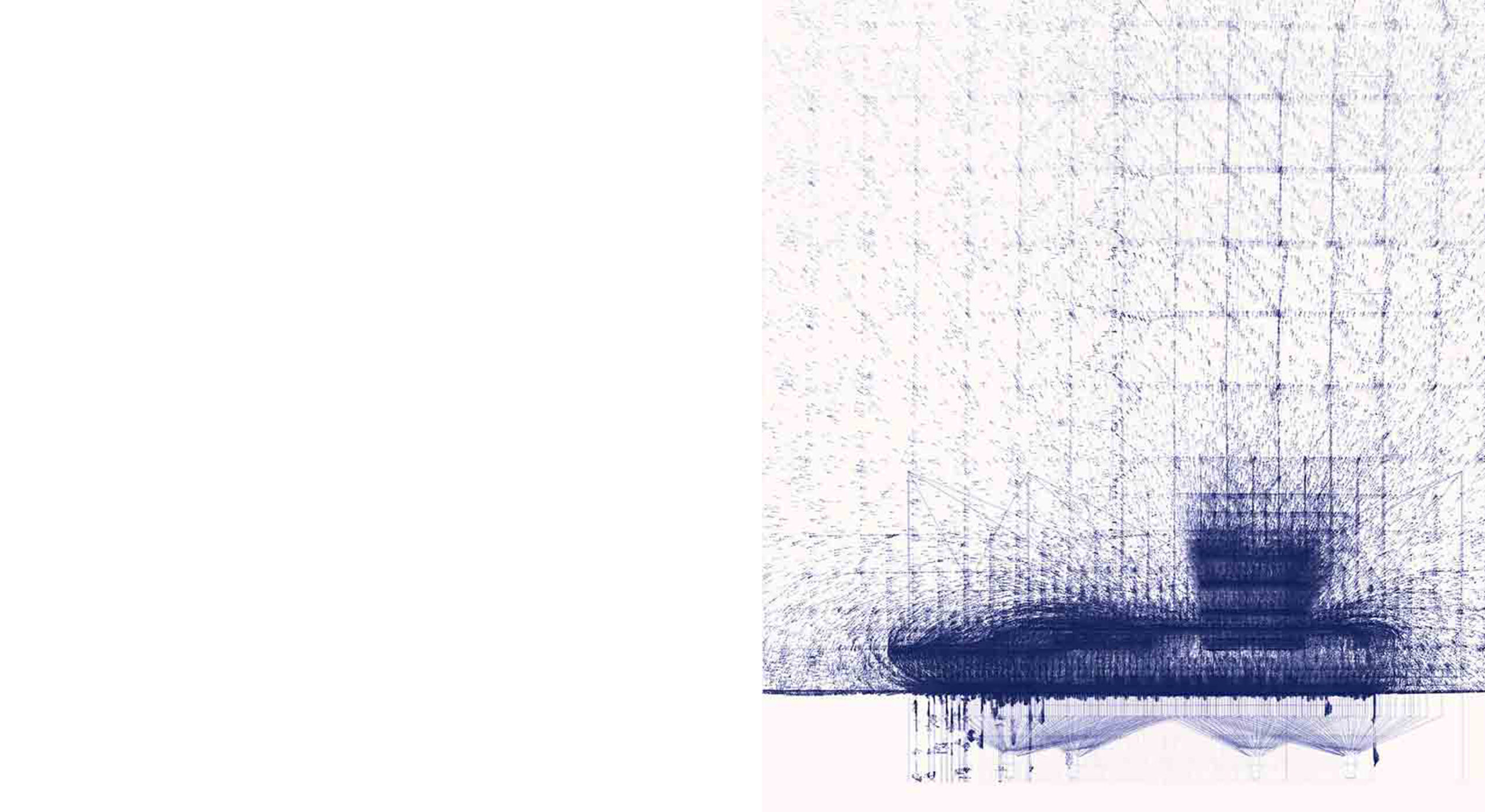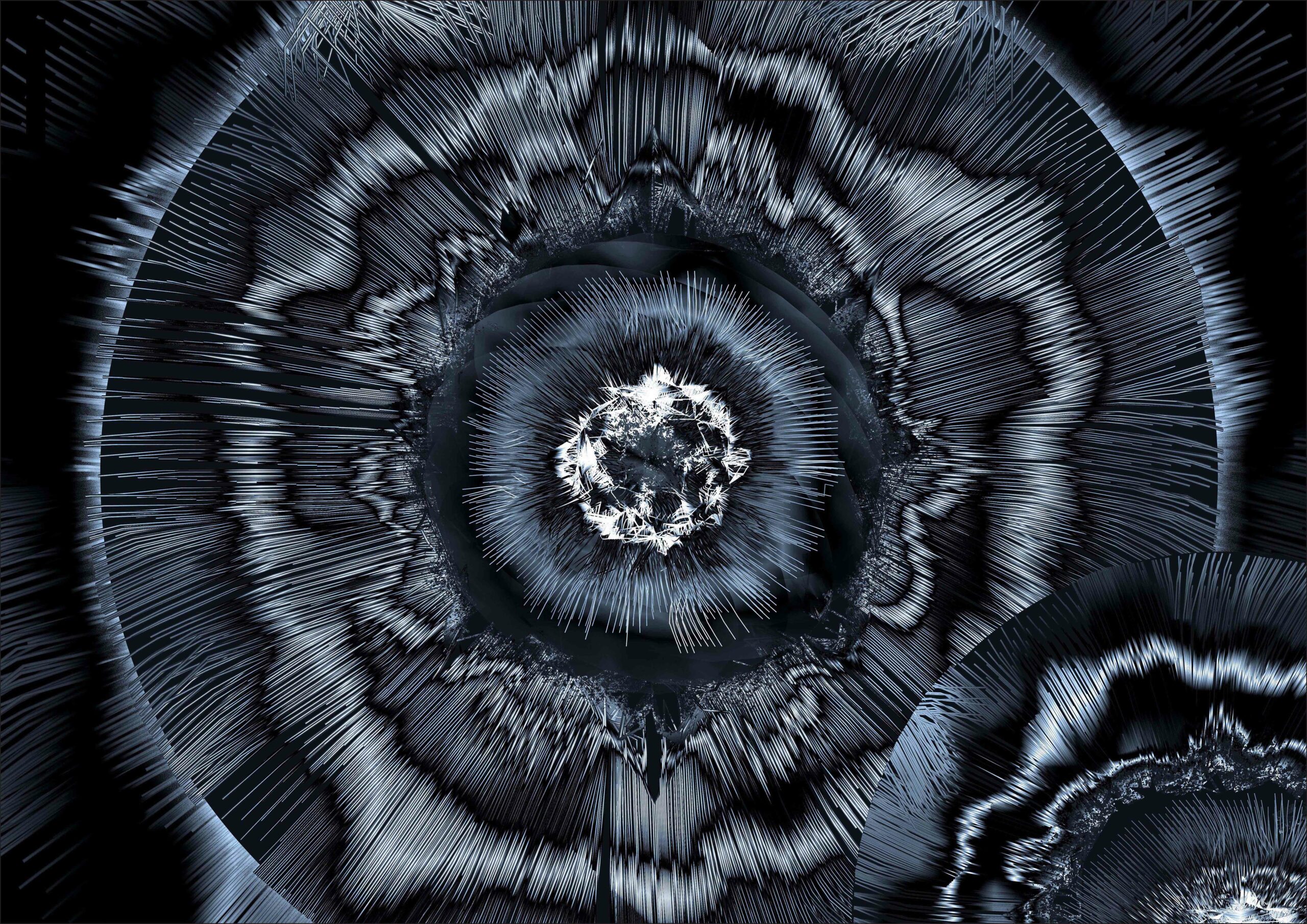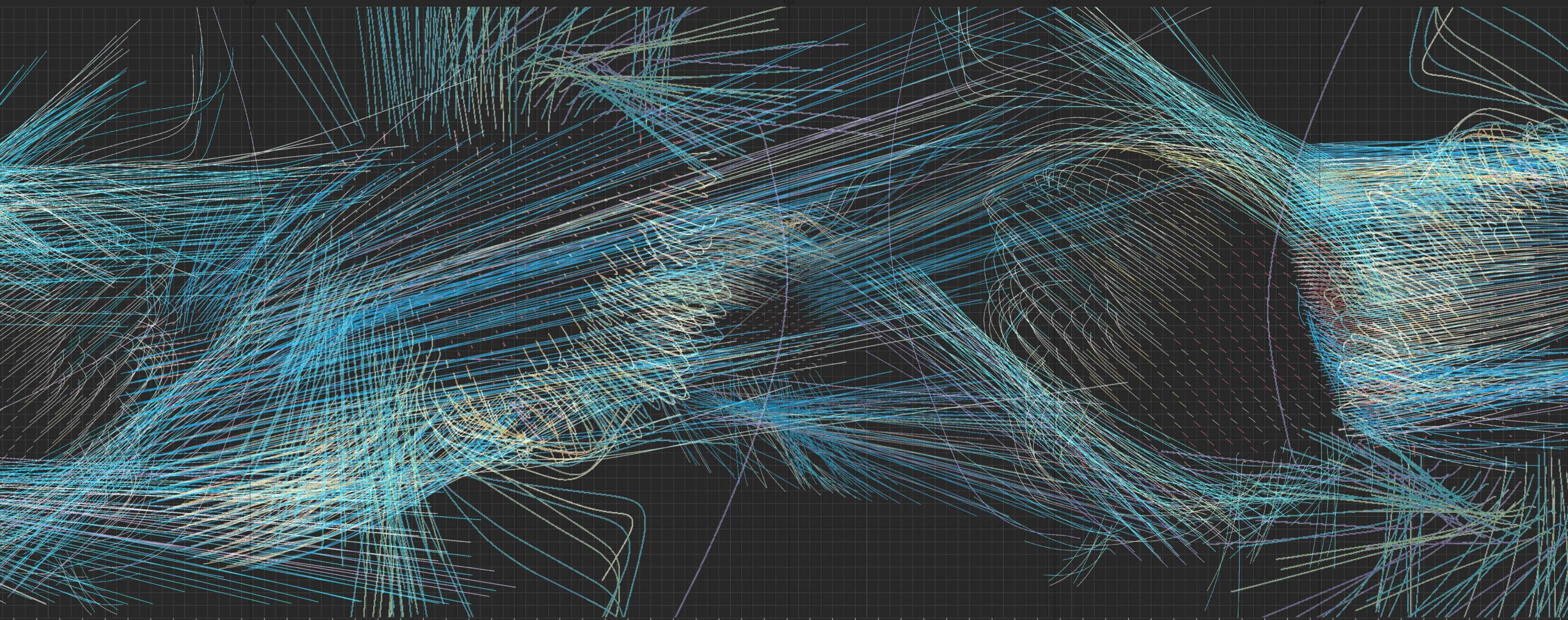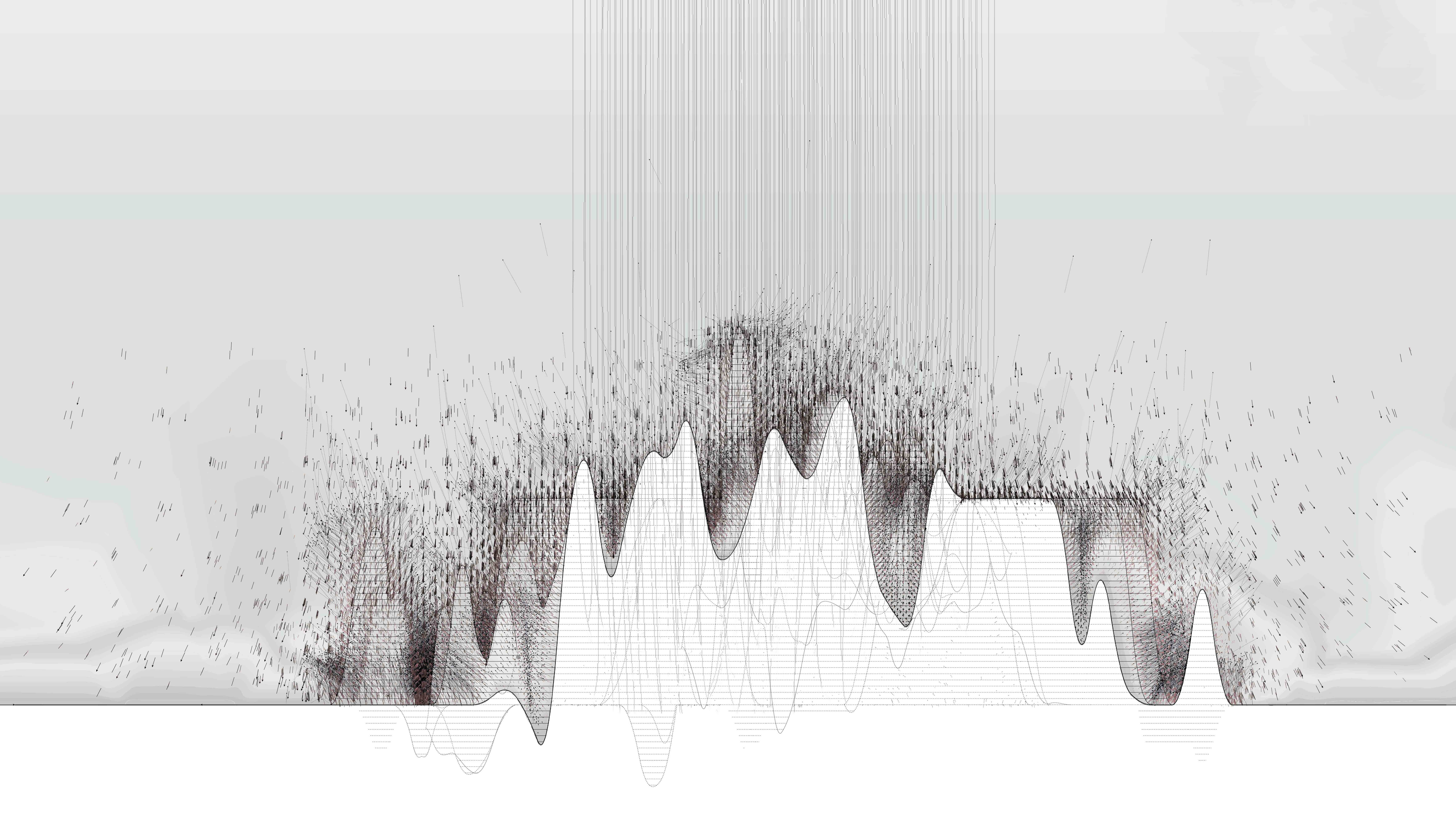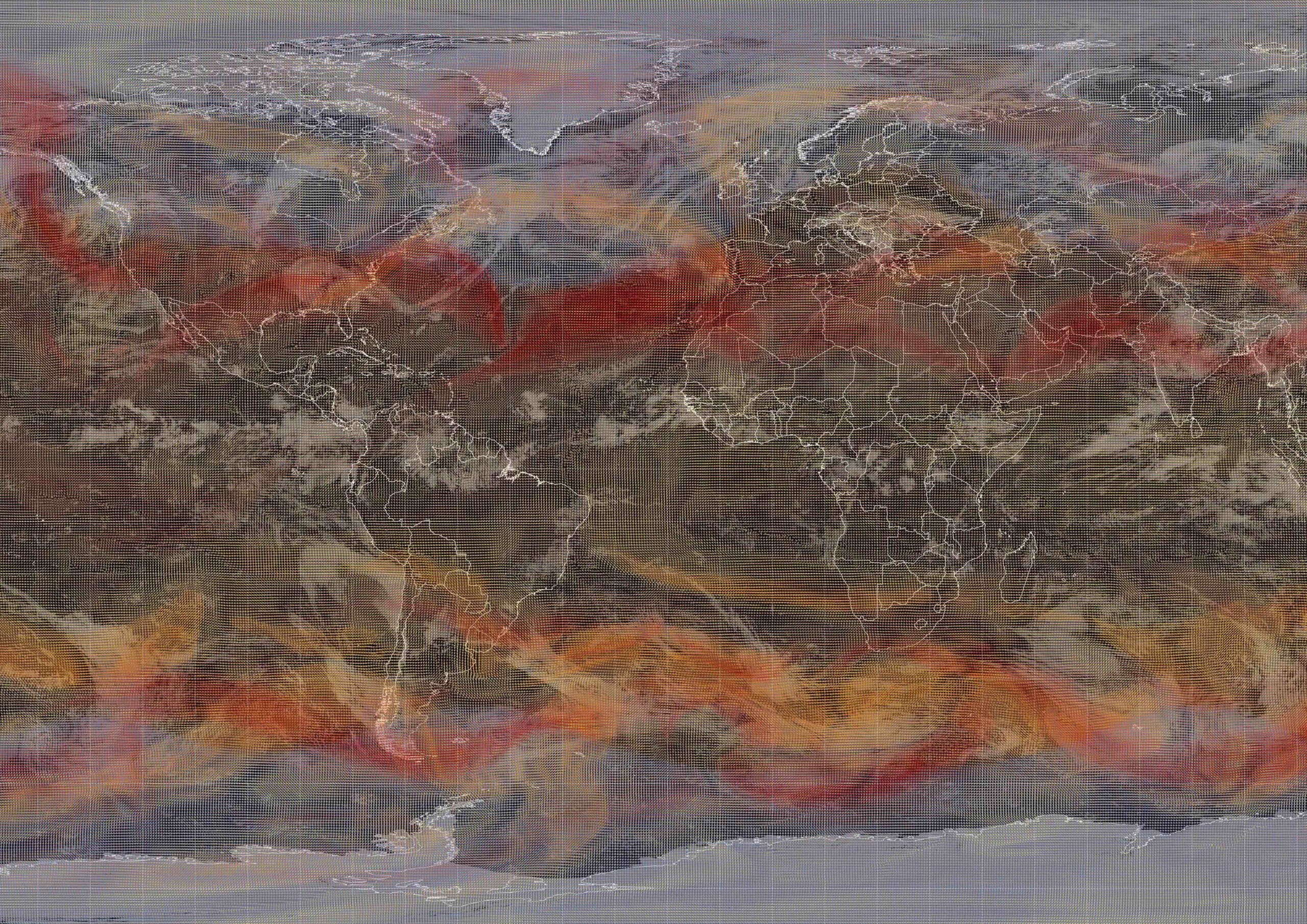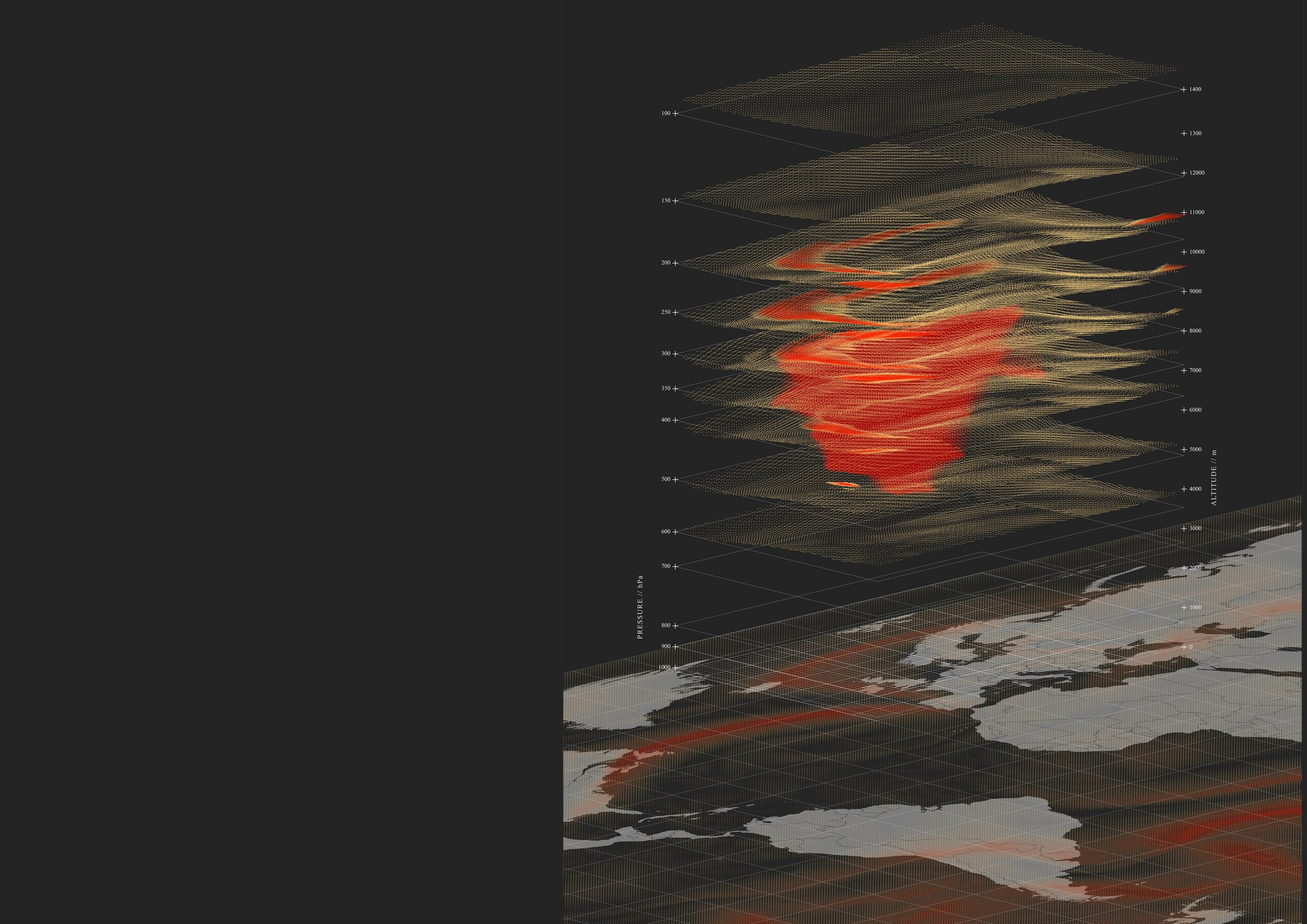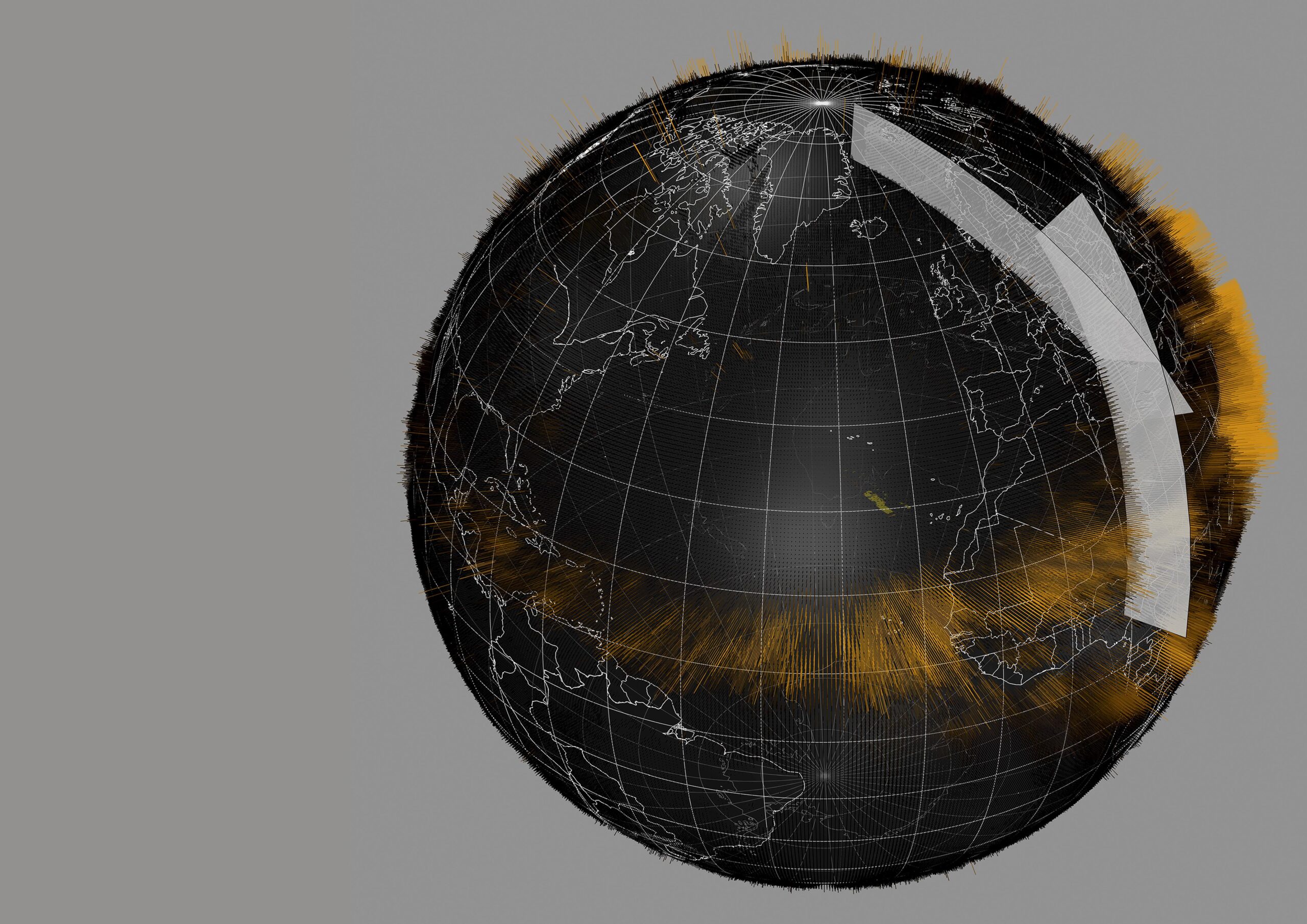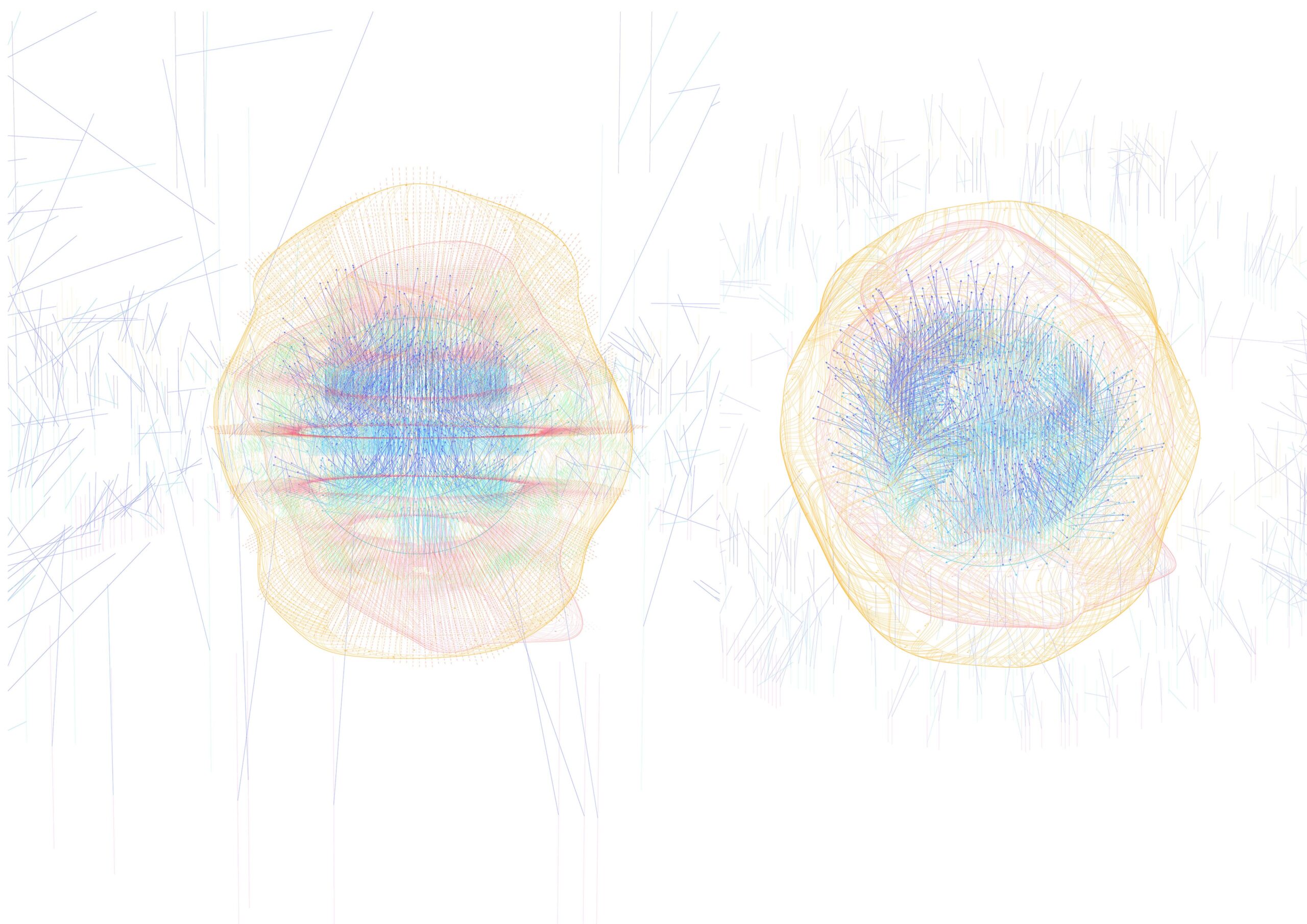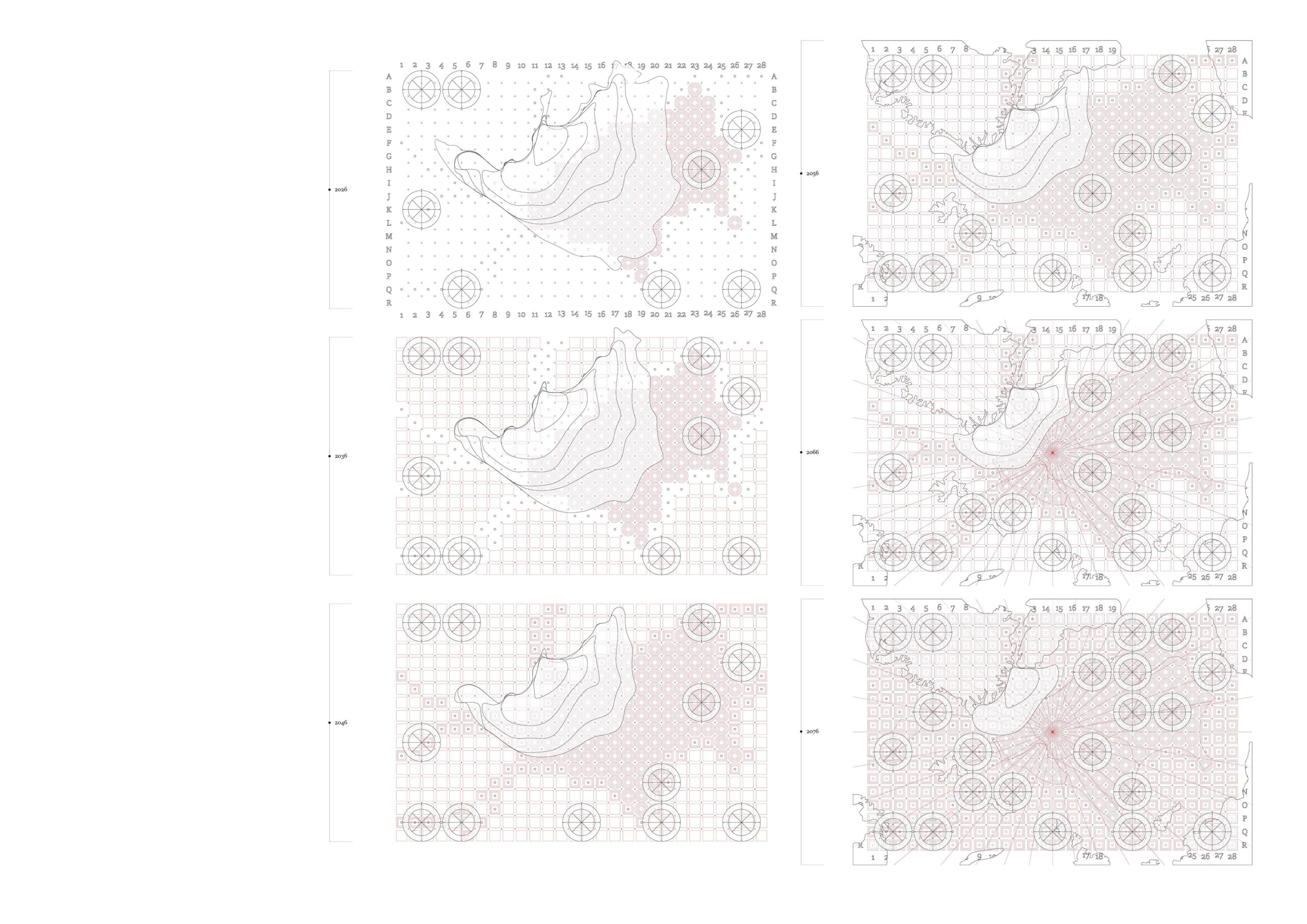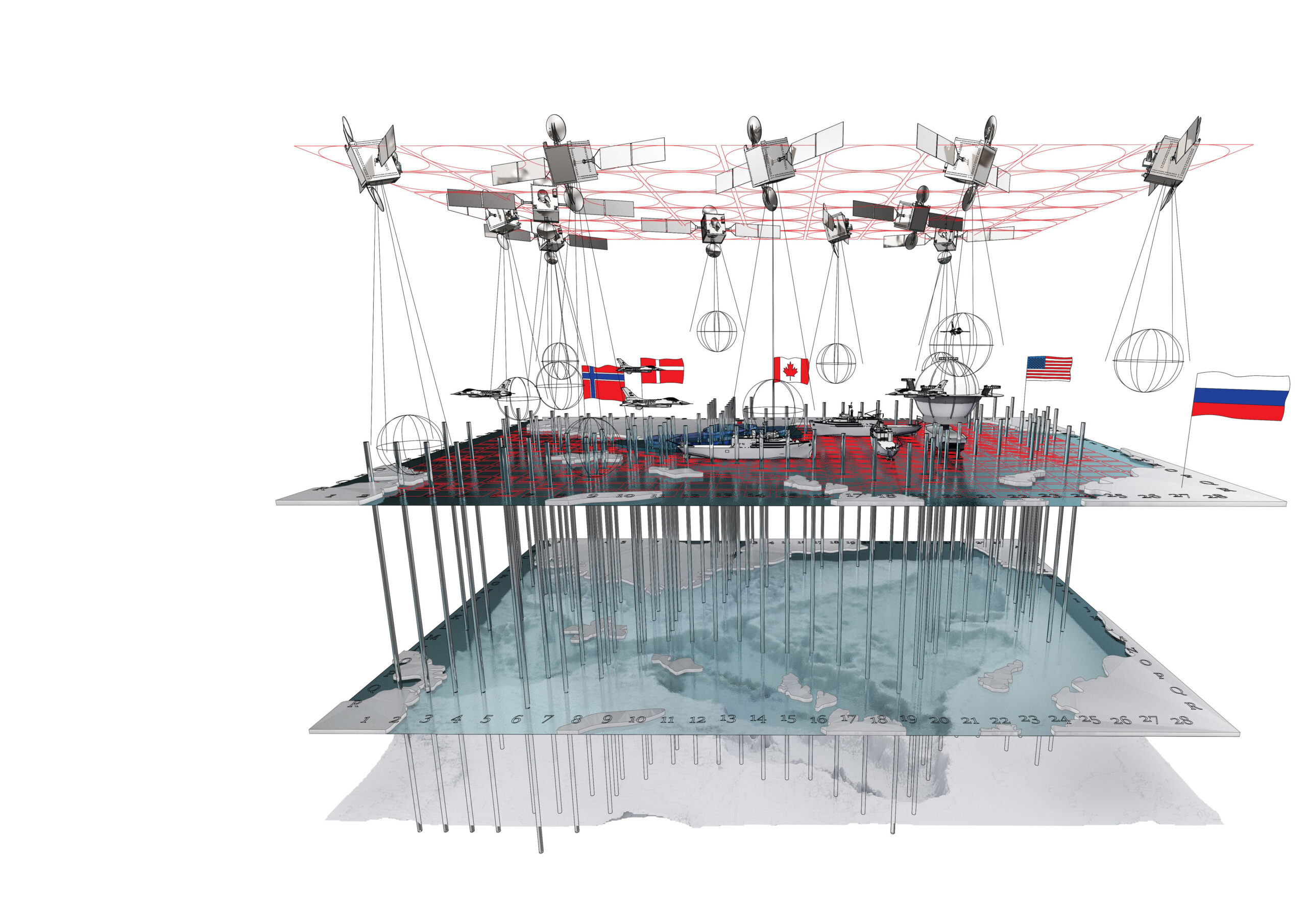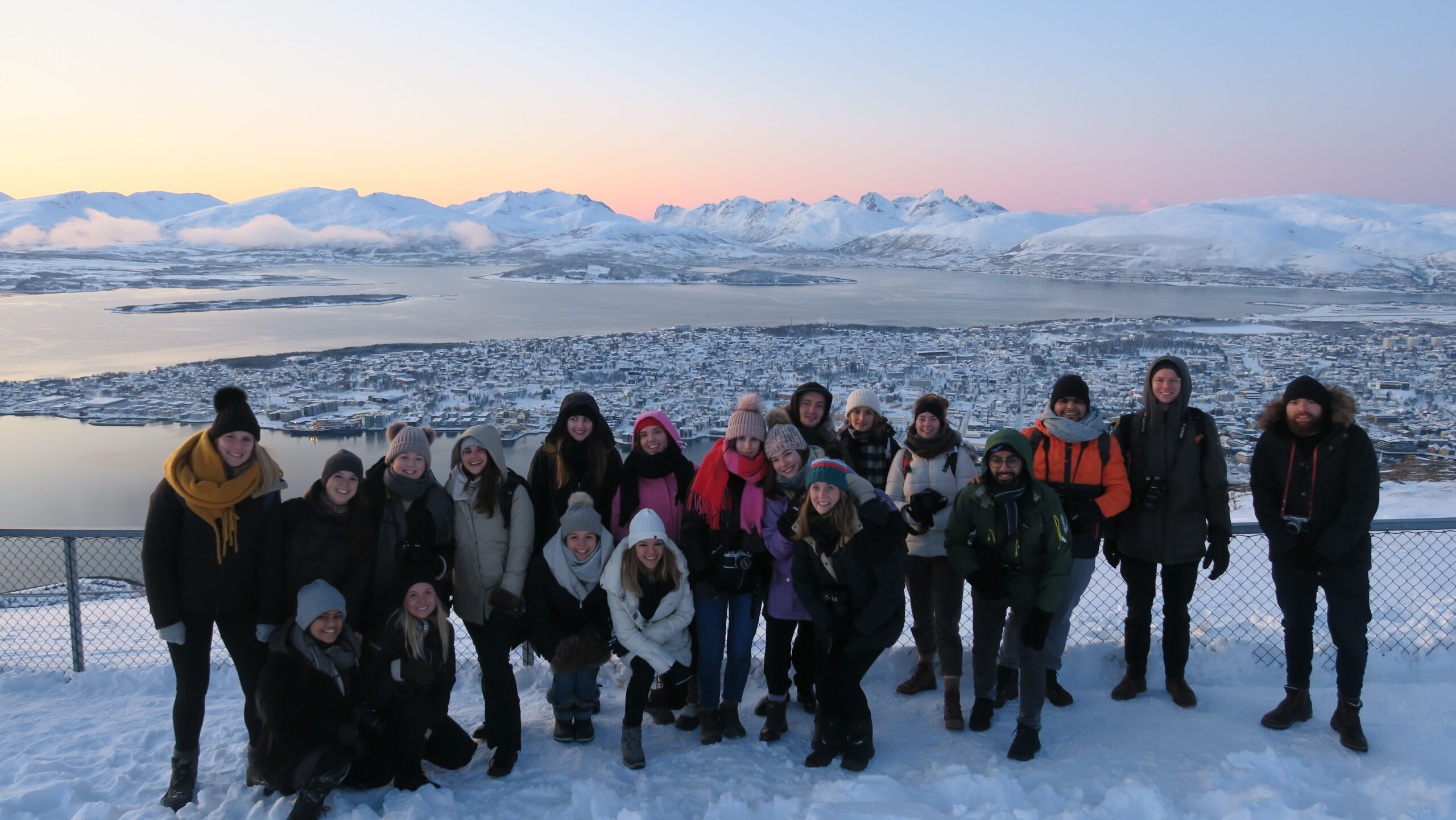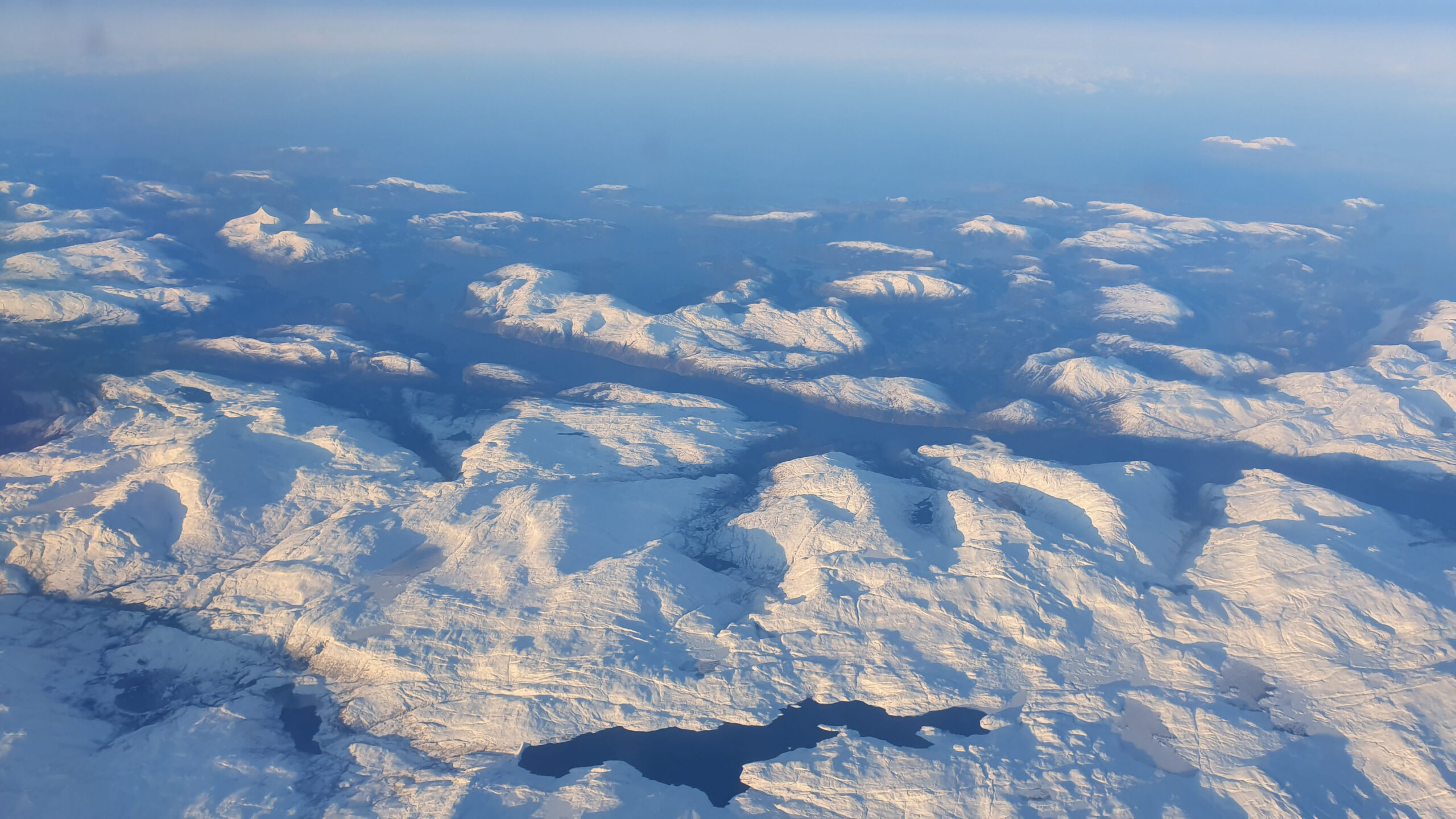Tutors: John Cook, Ben Pollock + Laura Nica
Air, Architecture + Other Climates
[57.0 degrees to 71.0 degrees N : Norway]
Overview
Design Studio 18 began its inaugural investigations into ‘Architecture, Energy, Matter’ (2013-16), through explorations of the ground – geology, minerals, their extraction, and the energy economies these generated. The following three years partnered the studio to the research agenda of ‘Monsoon Assemblages’ (2016-19), investigating three sites around the South Indian monsoonal basin, located within the aqueous environments of marshland, delta, and finally river. The proposed third chapter of DS18 evolves these investigations vertically – through the elements of air, and upwards, to the outer layers of our atmosphere.
The wider context for the studio’s next explorations will be formed around three interlinked and transforming climatic phenomena: the boundary of the polar region defined as the Arctic Circle, the global circulatory systems of the Ferrel and Polar air cells, and the upper tropospheric westerly air flow known as the Polar Jet Stream. These entwined atmospheric systems, responsible for shaping and influencing the climates and weather patterns of the majority of the Northern Hemisphere, are beginning to destabilise, shift and morph in unpredictable ways as a result of man’s anthropogenic exploitations. It is amongst this high latitude banding, of shifting and extreme climates tied to upper atmospheric air systems, that DS18 will commence its new investigations.
Context
This year our focus will be on Norway, whose mainland stretches across over 13° of latitude within this belt of globally volatile climatic activity. It’s dramatic and varied topography, still rising due to glacial melt and crustal movement, traverses abruptly between coastal, lowlands, fjords to mountains. The result is a landscape of wide ranging and gradating climatic zones and the unique ecosystems they engender – from marine, estuarine and intertidal, through boreal, alpine and up to the arctic tundra.
As Norway braces for the impacts of our impending climatic breakdown, both opportunities and dangers emerge. Warmer temperatures reshape animal habitats and migration patterns, increase agricultural viability and open up new trading routes. Conversely an ever encroaching tree line and spreading oceanic algae blooms destroy existing habitats and ecologies, whilst melting permafrost triggers avalanches, landslides and releases dormant bacteria.
As these wider atmospheric changes begin to shift and entangle these once stable zones, it is amongst these reshaping territories and colliding boundaries that we will explore – through altered ecologies, developing urban settlements, expanding infrastructures and agricultural/industrial opportunity. What architectures will emerge and what is their role amongst these transitions? To offer resistance, adaptation, measurement or control?
Process
We will begin through research, exploring these land and air-scapes from the global, regional to territorial scale – to uncover scenarios, characters and narratives within this context, whilst isolating and investigating the atmospheric constituents they are entangled with. Through a series of guided digital workshops we will use mapping and simulation tools as a methodology to record, visualise and share our findings – developing new hybridised cartographies to examine these interactions between the physical, political, atmospheric and experiential. We will project these constructs forward in time, to test and examine both predicted and potential futures.
In November we carry out our field trip to Norway, to witness the breadth of these lands and airs either side of the Arctic Circle, whilst exploring and defining our sites. Over the week we will travel through Tromsø and Oslo, where we will participate in a series of collaborative workshops with a number of High North climate research institutions to shed new light on our investigations and learnings, before concluding our trip at the Oslo Architecture Triennale. In semester two, using site based findings and the design, analysis, and representation tool-kit developed, students will commence their individual major design thesis. As we embark on this unknown and experimental journey through these emerging and globally critical issues, we carry no preconceptions of architectural outcome – we instead will allow ourselves to be lead by exploration, testing and discovery.
Ethos
Climate Change / Sustainability
The context of our global climate emergency provides the foundation for all DS18 investigations. Alongside the sciences, we believe that the arts and architecture has a role in playing out and exploring future scenarios, testing the effects of changing environmental processes upon life and design, whilst using the project as a tool to communicate and represent these intangible global issues to new audiences and in new ways.
Data / Computational Tools
We aim to ground projects through directed and appropriately rigorous levels of research. We gather and build datasets, employ cartographic methods and experimental diagrams to record, illustrate, and analyse these wide ranging conditions and complex relationships. We use computational design tools to process these, to explore them across ranging scales, and prepare or directly use their outputs to inform the design process.
Design / Representation
We encourage original design projects, multi-programme briefs exploring new typologies, appropriate to context and project scale, driven by the individual themselves. Our objective is to deliver these through new and creative forms of representation – to celebrate complexity and communicate the connections between the vast assemblage of project themes, relationships, scales, actors and material.
Instagram: @westminsterds18



